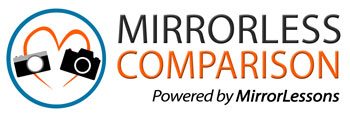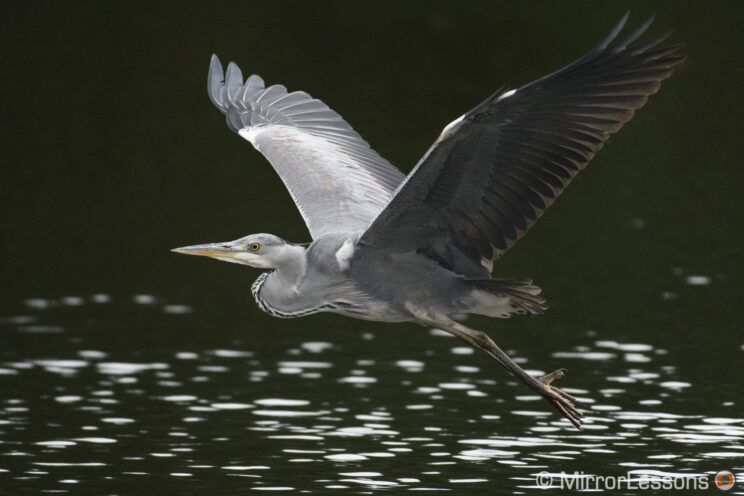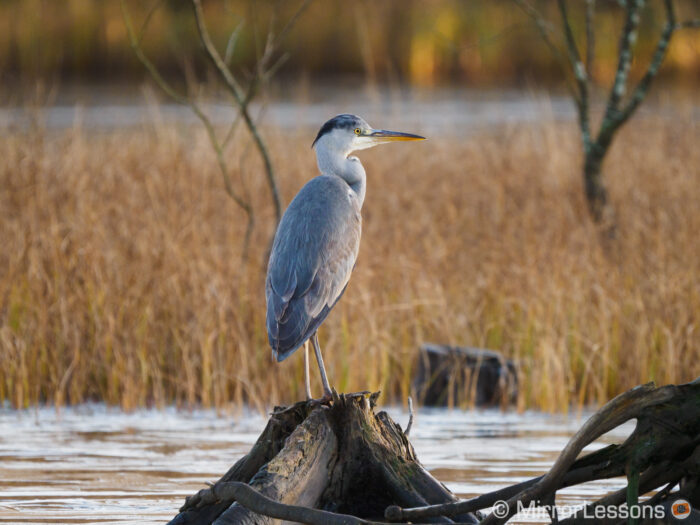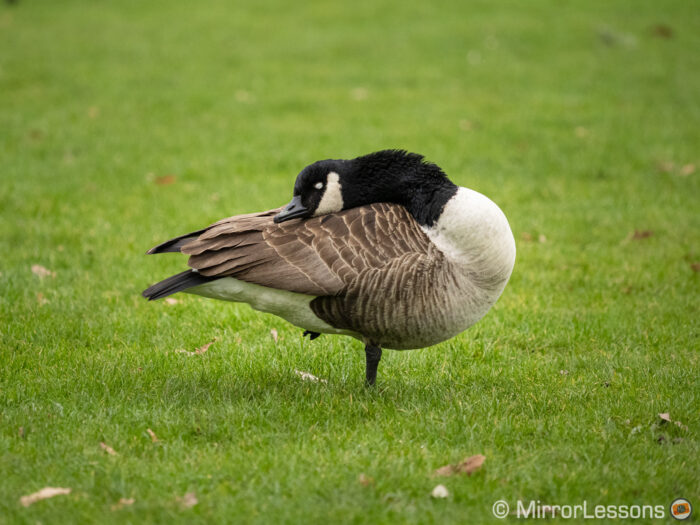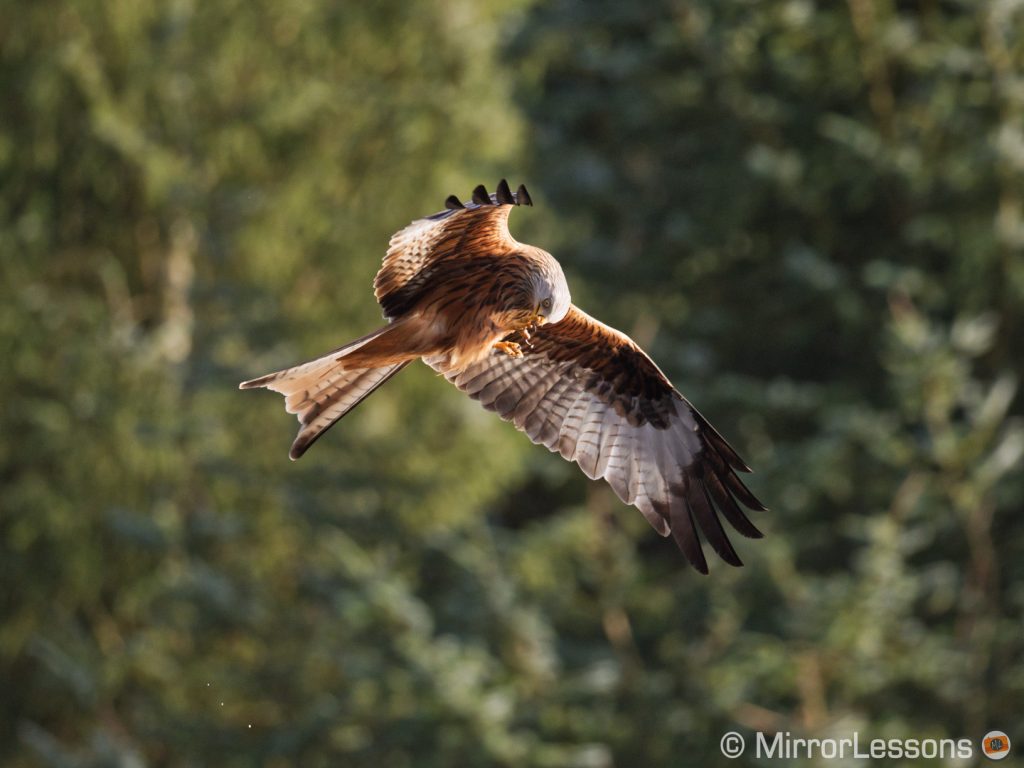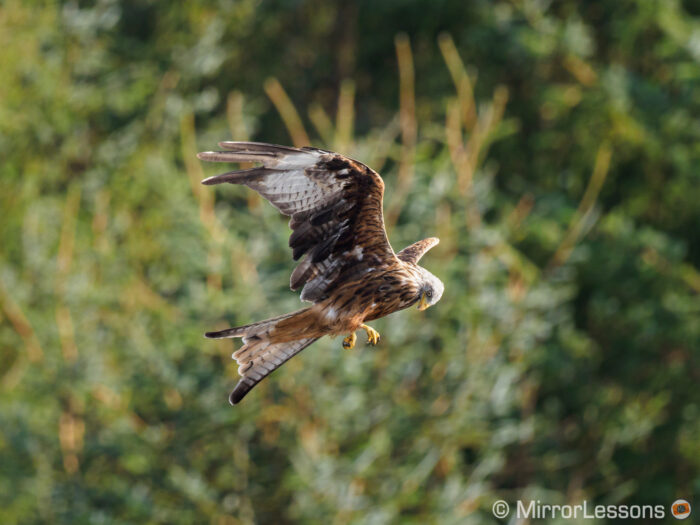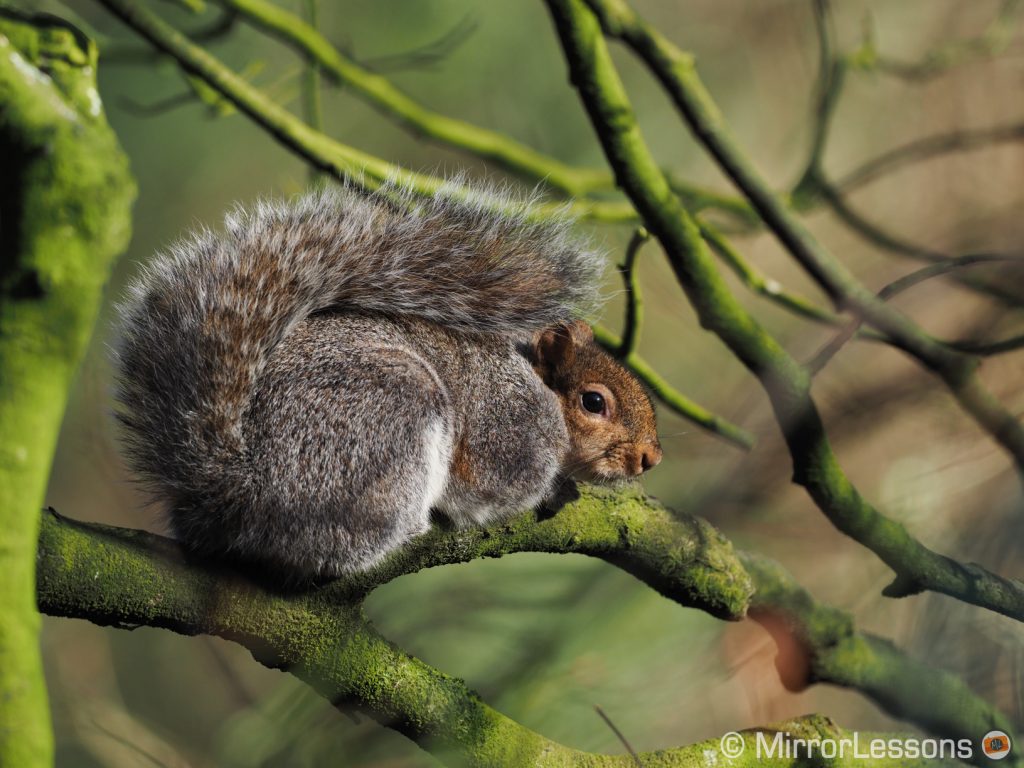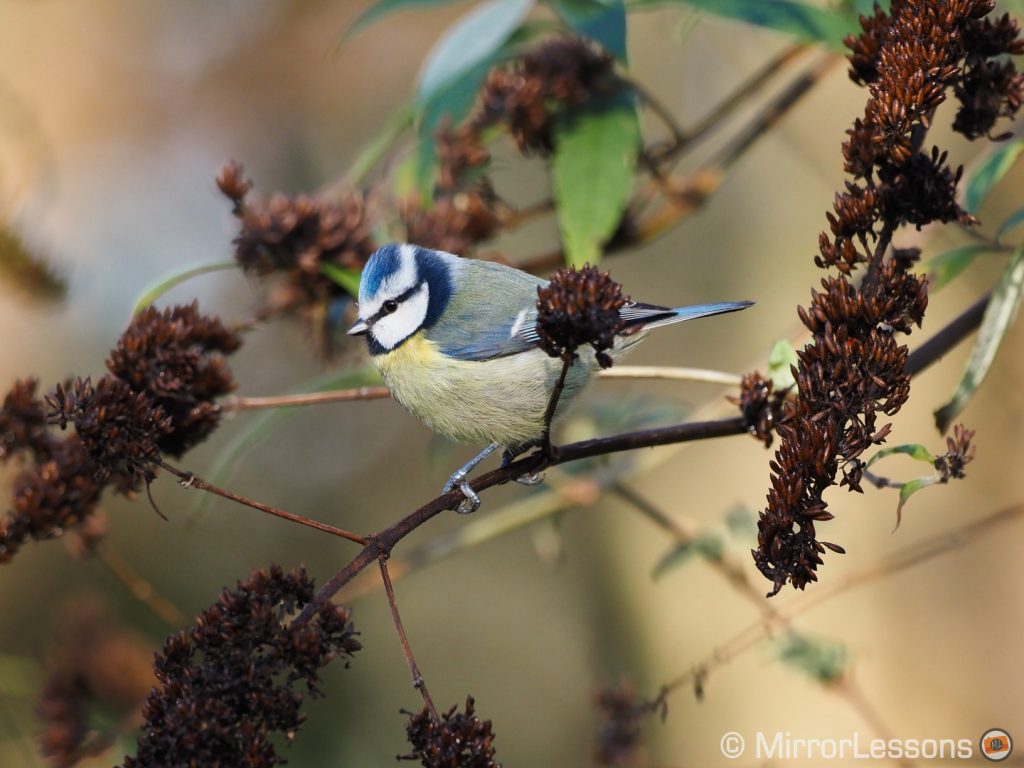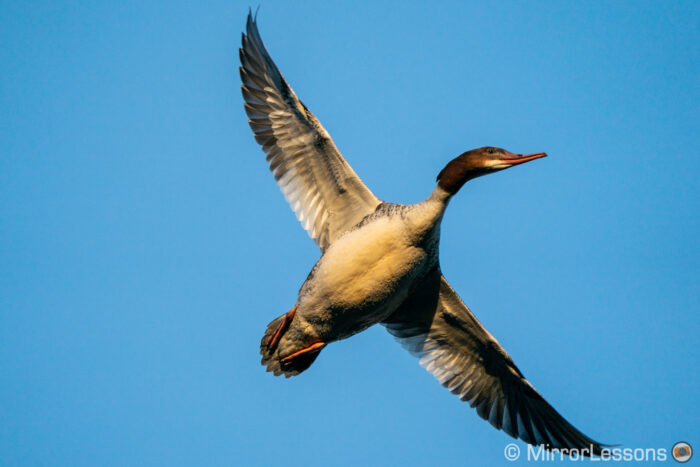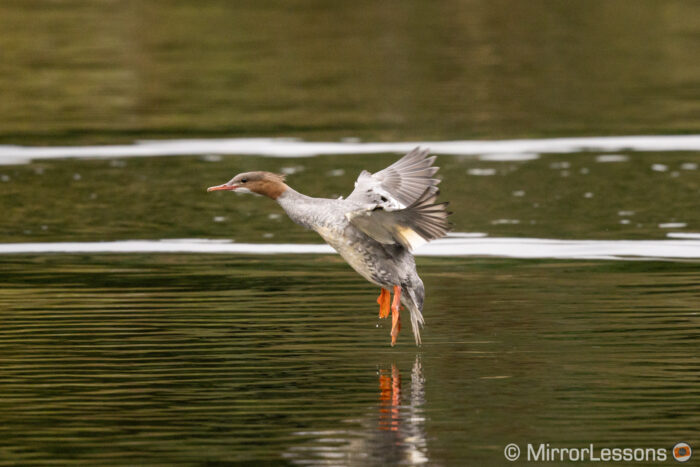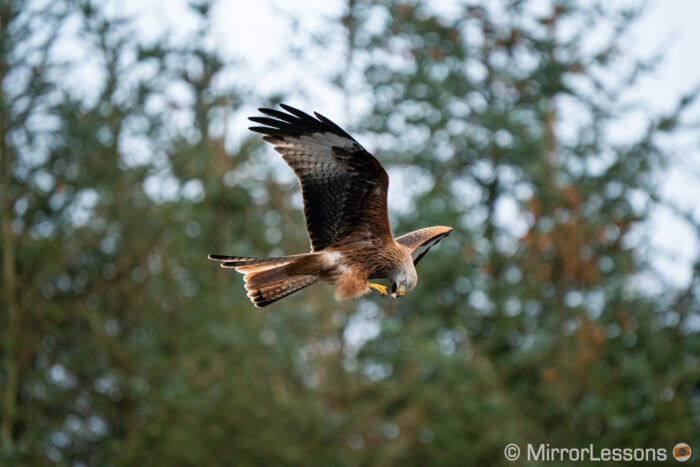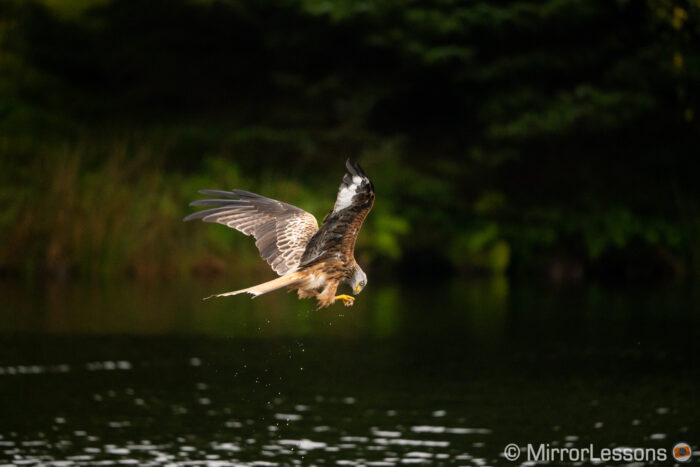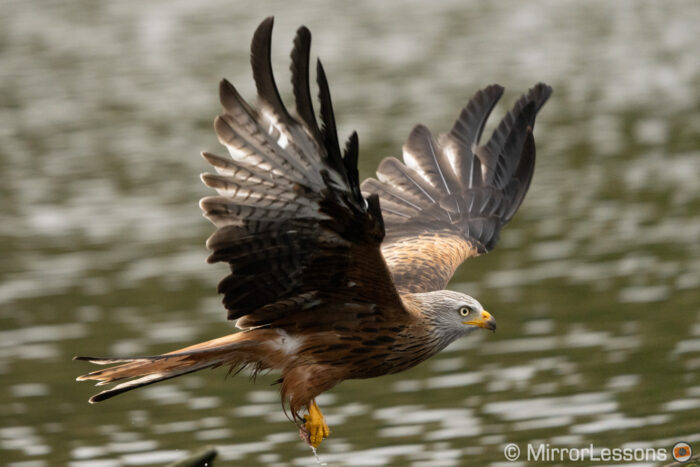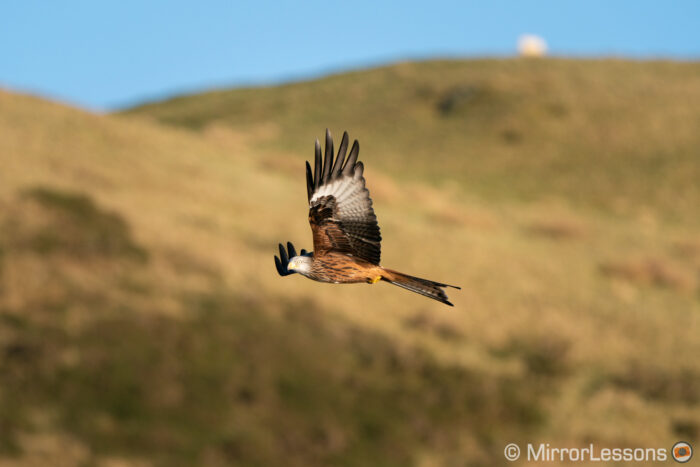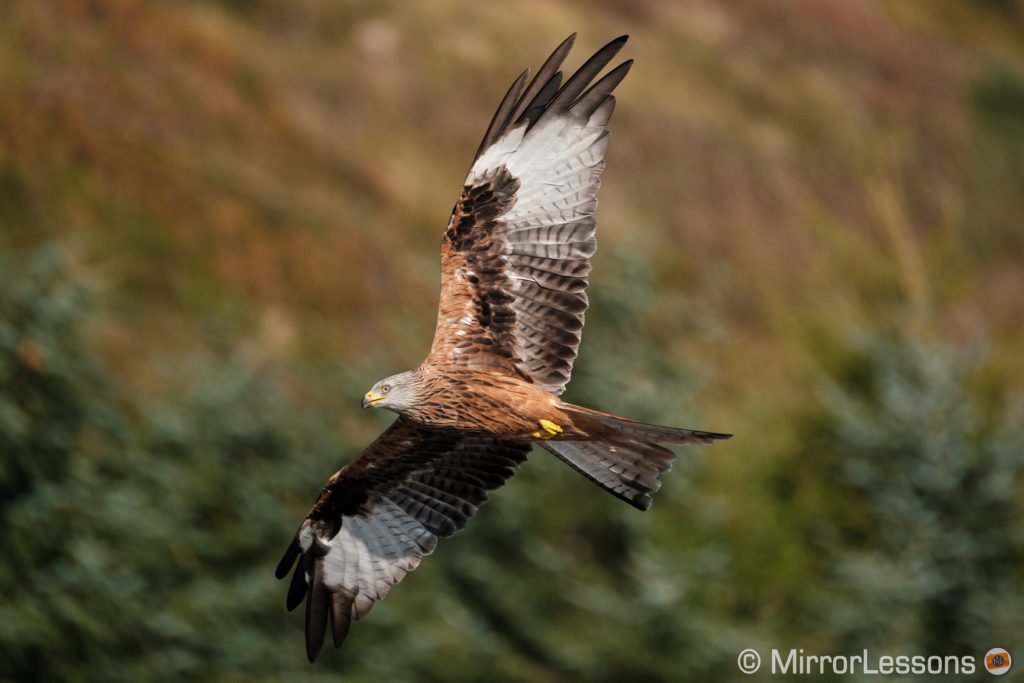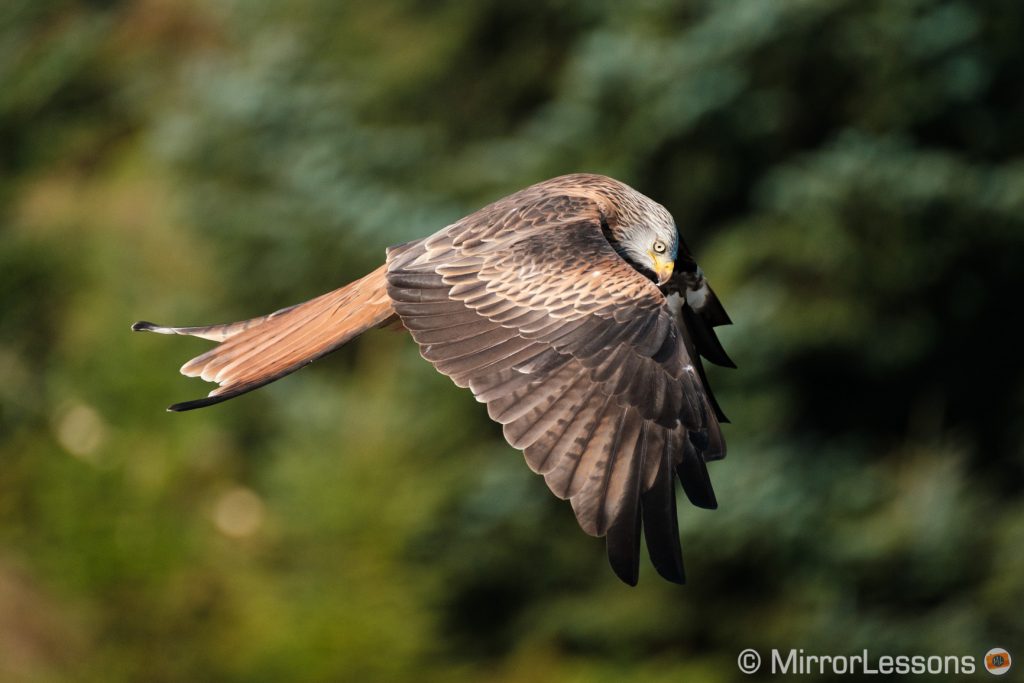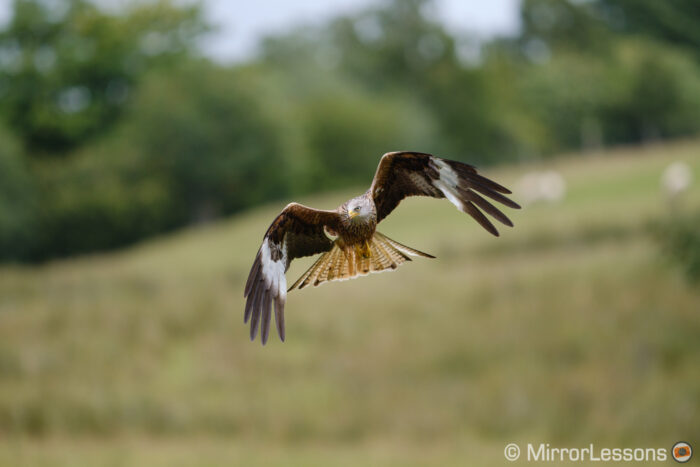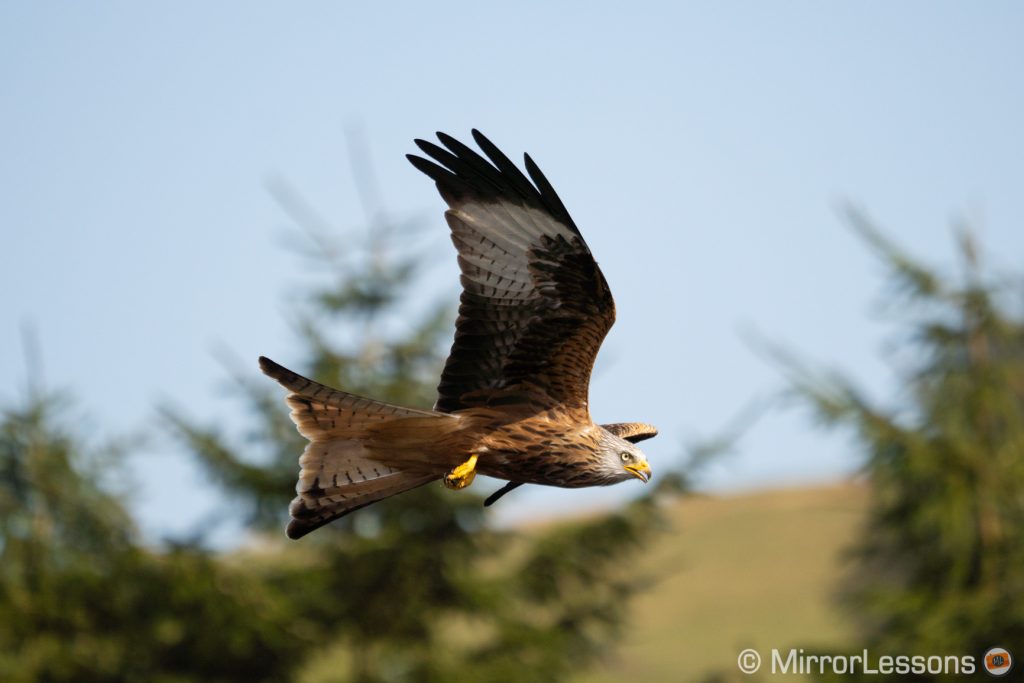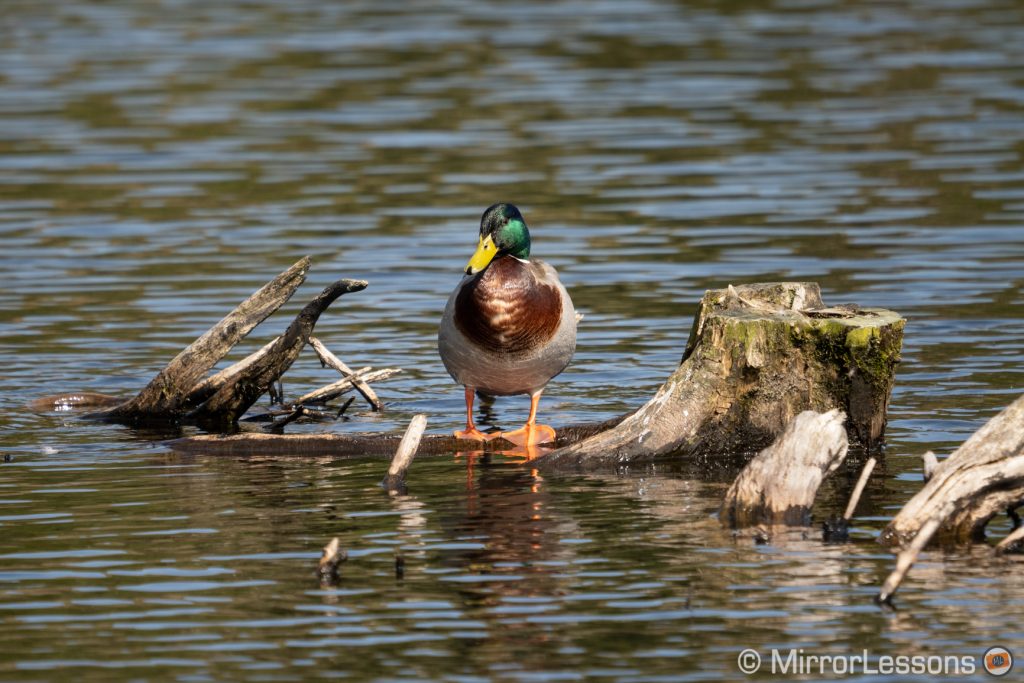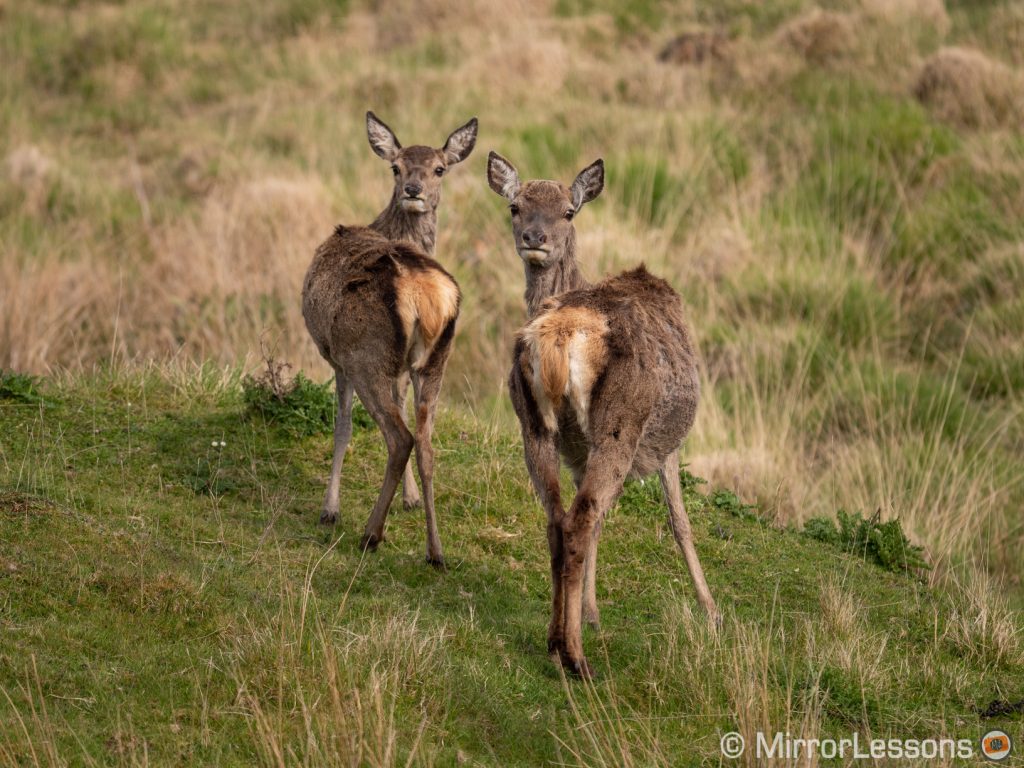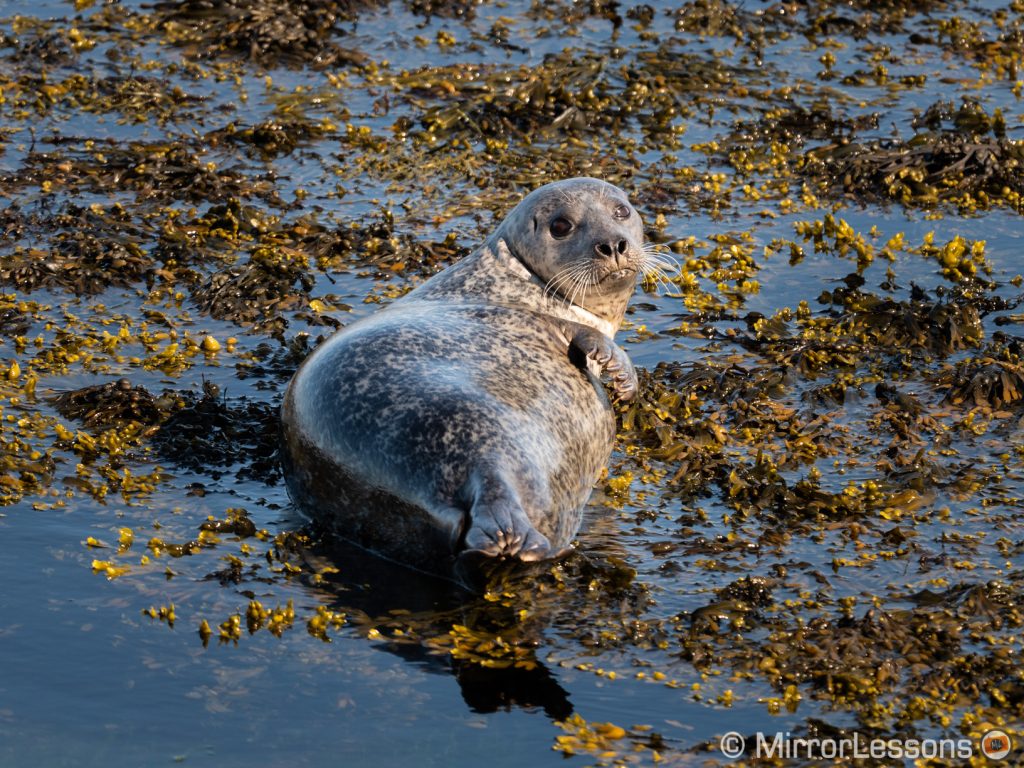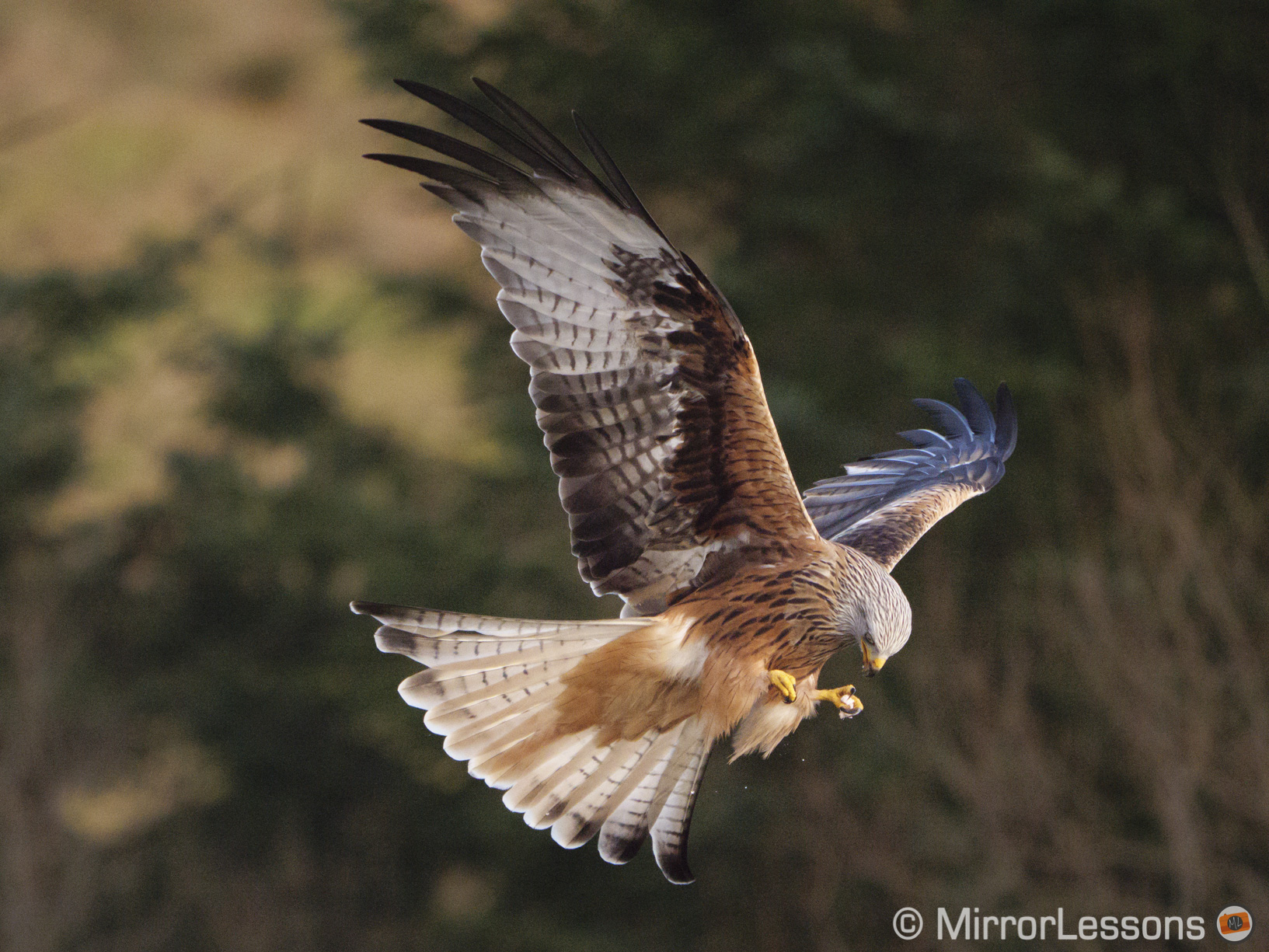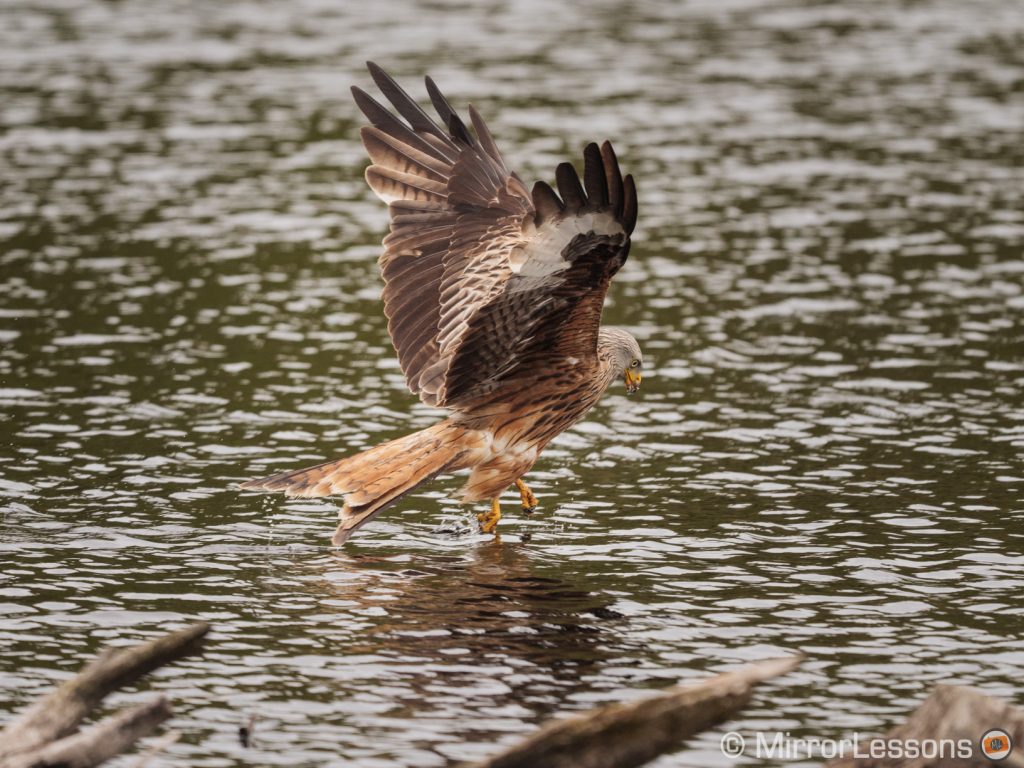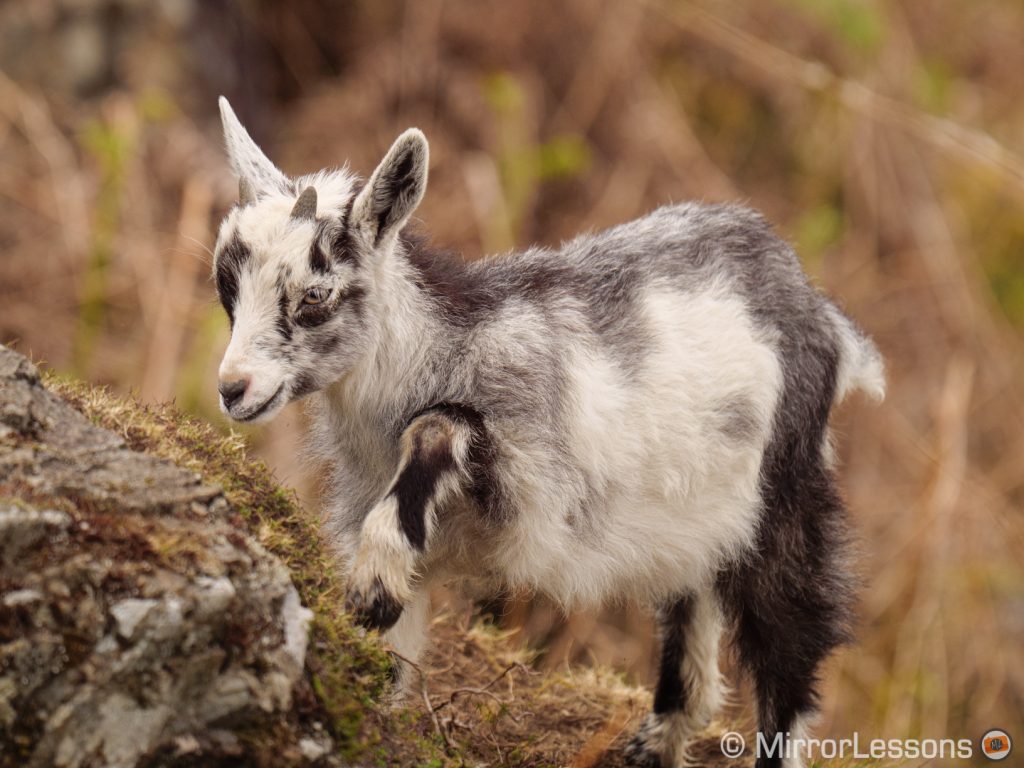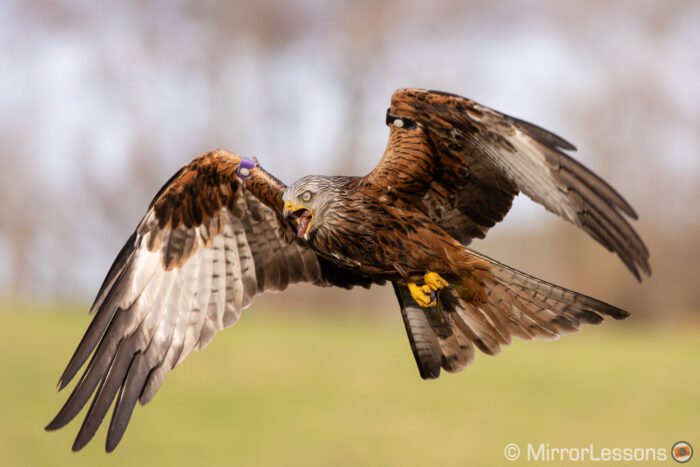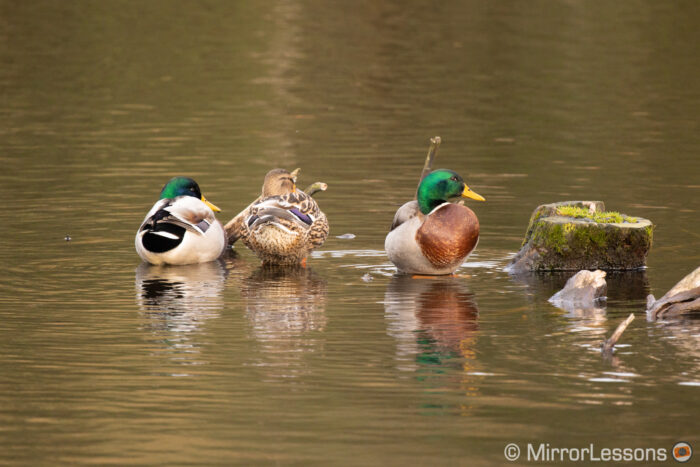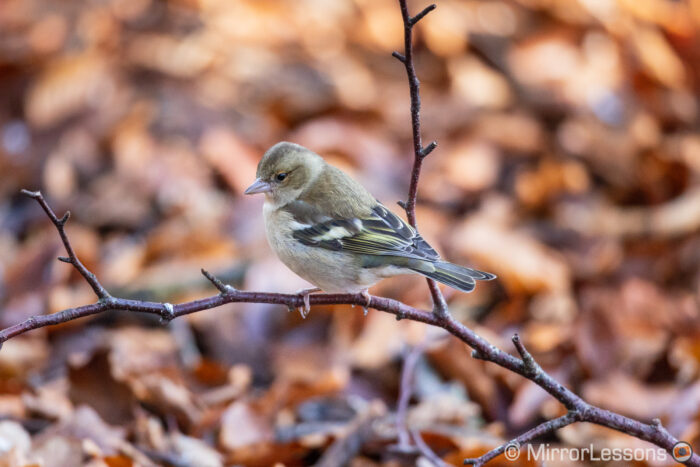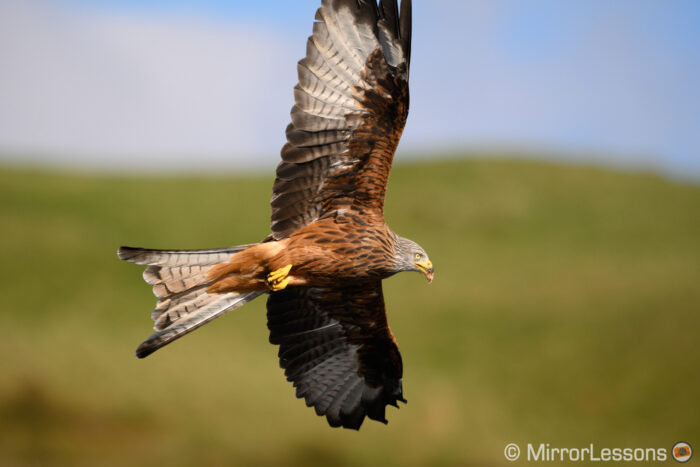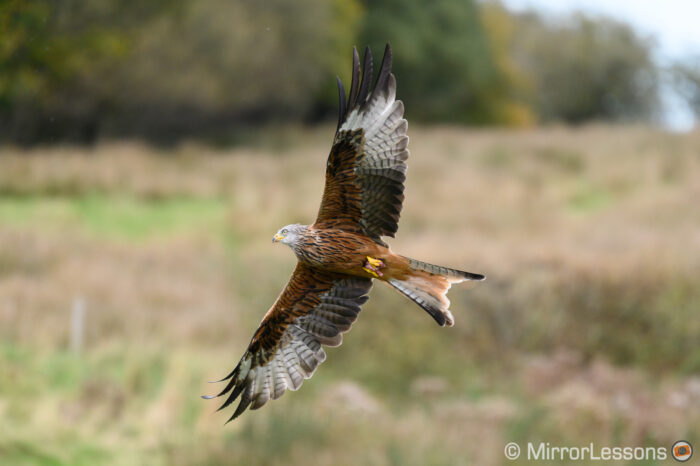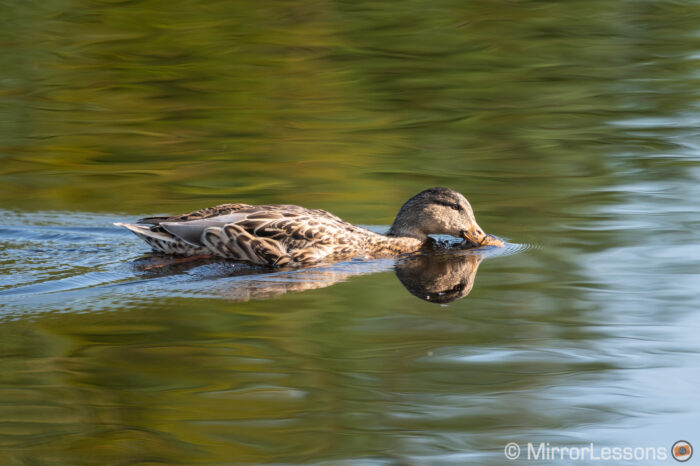Wildlife photography is a genre that DSLR cameras have dominated for decades. Their robust design and reliable autofocus system, in addition to the vast lens selection, are just a few of the many characteristics amateurs or experienced photographers require in order to capture animals in their natural habitat.
Over the last few years, however, mirrorless cameras have reached a new level of maturity, making them an interesting alternative for this challenging genre. Thanks to technological advancements, improved performance, a unique array of new features and an increasing number of telephoto lenses, wildlife photographers have a fresh new set of tools to work with.
With this in mind, a number of questions naturally arise:
- How good are mirrorless cameras for wildlife photography?
- What concrete benefits do they bring and are there limitations to be aware of?
- Last but not least, which systems or cameras perform best?
Five years ago, I started to practice this genre for several of my camera and lens reviews, analysing key aspects such as lens quality and autofocus performance. This article is the result of my experience so far.
Ethics statement: All opinions expressed in this article are our own and based on real world experience with each system. We were not asked to write anything about these products, nor were we provided any compensation of any kind. Within the article, there are affiliate links. If you decided to buy something after clicking the link, we will receive a small commission. To know more about our ethics, you can visit our full disclosure page. Thank you!
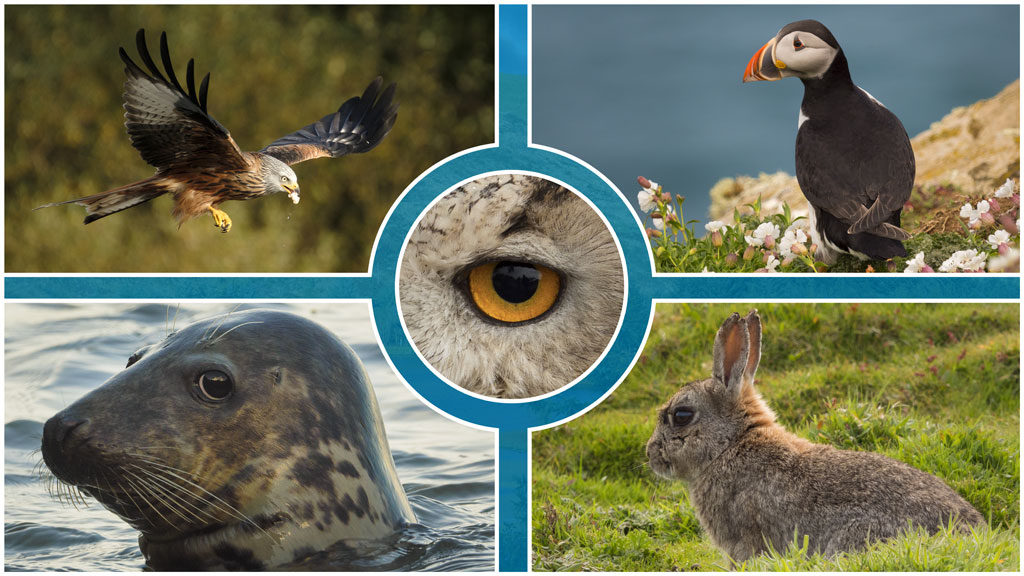
TABLE OF CONTENTS
1. Article updates
2. Preface: what makes a mirrorless camera good for wildlife photography
3. Olympus OM-D E-M1X and E-M1 III
4. Sony A9 II, A7R IV and A1
5. Fujifilm X-T3 and X-T4
6. Sony A6400 and A6600
7. Panasonic G9
8. Canon EOS R5 and EOS R6
9. Nikon Z6 and Z7 series
10. Conclusion
Article updates
- April 2021: major update to the article, added chapters about Canon and Nikon
- July 2020: note about Olympus divestiture in the E-M1X section
- January 2020: added feedback about the A9 II, A9 with firmware 6.0 and G9 with firmware 2.0
- October 2019: added info about the A9 II, thoughts about the A7R IV in the “other mirrorless cameras” section
- September 2019: lens lists updated
- May 2019: replaced a6300/a6500 with the a6400, updated G9 section
- February 2019: replaced E-M1 II with E-M1X, various prices updated
- November 2018: replaced X-H1 with X-T3
- July 2018: replaced X-T2 with X-H1 following our experience with the flagship Fujifilm camera. Added extra lens information in the A9 section. X-T2 and A7 III added to Other Mirrorless Cameras section.
- March 2018: added shooting experience with the Panasonic G9. GH5 has been moved to Other Mirrorless Cameras section, A7r III has replaced A7r II
- December 2017: I added my shooting experience with the Sony A9
Preface: what makes a mirrorless camera good for wildlife photography
When I began working on this article, mirrorless cameras were only just starting to expand into the world of wildlife photography. Olympus was the first company to release a professional super telephoto lens (the 300mm f4 Pro) and Micro Four Thirds was the first system to offer a good array of products for every budget.
Then came autofocus improvements, dual card slots, faster continuous shooting speeds, more robust bodies and more competition.
In 2021, mirrorless cameras have come a long way, now offering a serious alternative to DSLRs, a breed that is slowly disappearing (Canon already said it probably will not design new EF lenses, Sony has not produced an A-mount product in years, and Nikon might follow the same path). So while DSLRs are still up to the task today, and will remain so for some time, it is safe to say that mirrorless cameras are the future for wildlife photographers.
Below are the various features I’ve analysed throughout the years in order to produce this article and keep it up to date.
- Autofocus: you can have the best camera in the world but if the AF lets you down while photographing a fast-moving animal, you will be disappointed. Single AF needs to be spot on and continuous AF needs to be precise and accurate. New technologies such as deep learning with animal detection are becoming more and more mainstream, and more reliable too.
- Continuous shooting speed: the faster the burst rate, the higher the chance you’ll capture the animal in the perfect position. Good buffer capabilities are a must too.
- EVF and Live View: electronic viewfinders are getting better and better with more resolution, faster refresh rates and a shorter lag time. In burst mode, some of them display the last picture taken while others keep a live view activated, which can make a difference when following a fast subject.
- Build quality and grip: a robust design with weather-sealing is important, as is a large grip to make the camera comfortable when used with large lenses.
- Battery life: swapping batteries takes a matter of seconds but when working in the wild, often in not-so-great weather conditions, it is helpful to have a battery with a long lifespan. An optional battery grip is very welcome too.
- Lenses: one of the most, if not the most important topic. Because mirrorless systems are younger compared to DSLRs, there isn’t as much choice but the gap is getting smaller by the day.
- Sensor: although I believe that all the cameras I’ve mention here give you good enough results for this genre, there are some aspects to consider such as resolution (the higher, the better since cropping is often necessary) as well as the usual comments when it comes to a small versus a large sensor.
Where relevant, I will also mention video capabilities, this being a feature that can be interesting for photographers seeking a hybrid solution or those who are just curious to start doing some video in their favourite wildlife location.
My mirrorless camera ranking for birds in flight
Throughout the article, I will mention the autofocus score I measured for each camera for one of the most challenging wildlife genres, birds in flight. I won’t go in-depth on how I came up with the score because I have a dedicated article about mirrorless cameras for birds in flight, where you can check all the results and find out the best settings for all the ones I’ve tested so far.
Nikon D500: still relevant today
In the first version of this article, I dedicated a whole chapter to the Nikon D500. I did so because back in 2017, DSLRs were still the undisputed kings of autofocus performance (among other things) and I wanted to try one of the very best to understand how close each mirrorless system was.
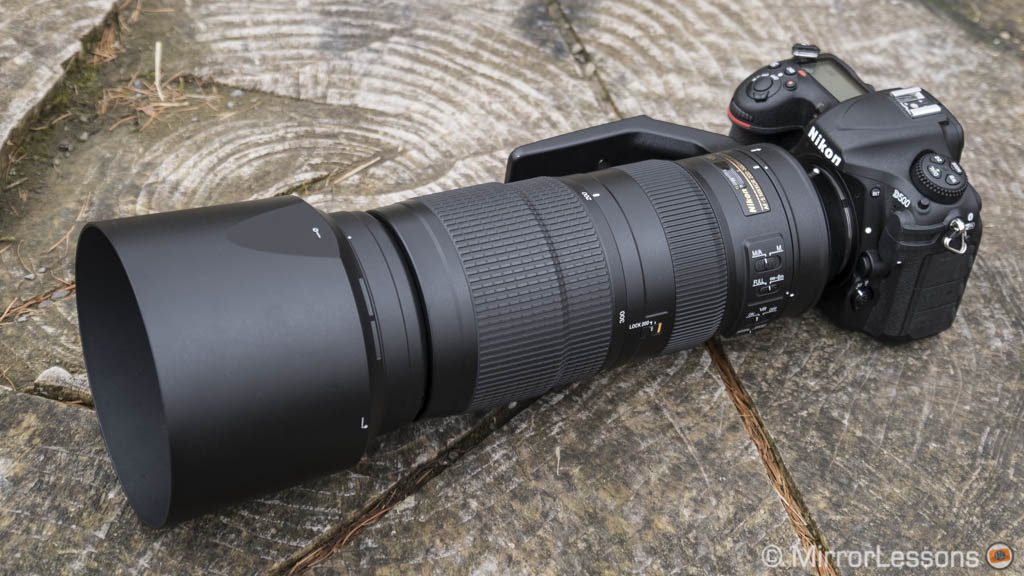
Today, its autofocus performance is no longer the very best I’ve tested, although its rank (80% / 95%) is still great. Mirrorless cameras have also started to outclass it with other features (faster burst speeds, Animal AF and blackout-free live view).
This chapter started to feel out of date, so I decided to cut this section (also to make the article a bit faster to read). This doesn’t mean I no longer consider the D500 a good candidate however. Quite the contrary – I think it remains an excellent choice for wildlife photographers for the following reasons:
- it can be found for a very good price
- the lens choice is the most complete you can ask for (from Nikon and third parties)
- the build quality and ergonomics are top notch
For those interested, I got the best results for flying birds using the 3D Tracking AF mode.
Check price of the Nikon D500 on
Amazon | Amazon UK | B&H Photo | eBay
Second-hand Nikon gear on
MPB US | MPB UK
Best Mirrorless for Wildlife: Olympus OM-D E-M1X and E-M1 III
Micro four thirds system – 20MP sensor – 60fps (S-AF), 18fps (C-AF)
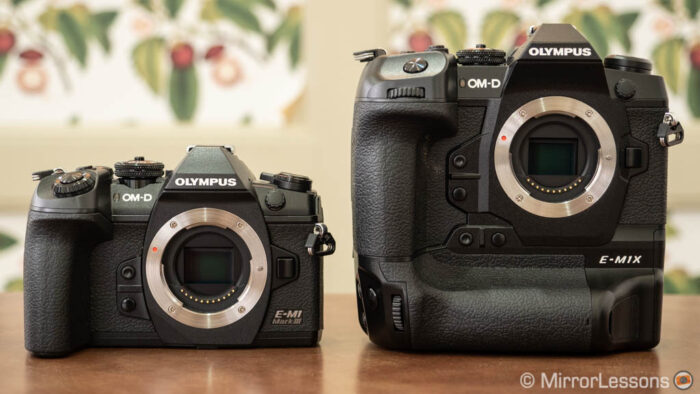
The E-M1X is the largest model in this article and is also the one that has been conceived for wildlife photographers more than any other. It has a built-in vertical grip and its construction has been designed to stand up to the most challenging weather conditions.
You may think that the E-M1X defies the portability of the Micro Four Thirds system. However in practical terms, I haven’t found such a big difference. Certainly the camera is heavier than the E-M1 III but the lenses remain the same. For example, using the E-M1X with the same telephoto lenses I used with the E-M1 III didn’t force me to upgrade my backpack.
Of course the E-M1 III is much smaller and is the obvious choice for those who want less weight when walking long hours. It also gives you more versatility: you can attach the optional battery grip when needed, or keep the size smaller when not needed.
They are both comfortable in their own way: the E-M1 III has a great grip despite the small size (my personal favourite, all mirrorless cameras considered). The E-M1X is of course very well carved out and you immediately get the impression of a serious build quality when you pick it up.
Both cameras feature a hybrid autofocus system with 121 cross-type phase detection points, and most of the settings are the same. The keeper rate for birds in flight is similar with the E-M1X scoring 74% / 91% whereas the E-M1 III got 72% / 94%.
Over the years Olympus has made good progress concerning the autofocus performance. The cameras lock onto the subject quickly and understand much better where it is, even against a confusing background. There are a lot of settings to control the AF behaviour and customise the AF Group Points. The main difference between the two is that the E-M1X has Intelligent Subject Detection, which uses an advanced algorithm to recognise and track birds.
All that said, in 2021 the AF remains at a lower level when compared to the likes of Sony, Canon or Nikon. It is far from bad, let’s be clear, but its competitors have produced better results concerning precision, accuracy and advanced modes such as animal detection. If I go back to what I said in the preface concerning the Nikon D500 being the initial benchmark for this article, then the E-M1X and E-M1 III are still not up to the level of the Nikon.
The E-M1X and E-M1 III feature excellent continuous shooting speeds. For static subjects or scenes where you can pre-focus, you can shoot up to 15fps with the mechanical shutter or 60fps with the electronic shutter (focus is locked on the first frame). If you want continuous autofocus, the performance decreases to 10fps or 18fps respectively. Unfortunately you don’t get a blackout-free live view experience as with the Sony A9 series or Fujifilm X-T4.
The cameras have a fast sensor readout so rolling shutter is well-controlled when using the electronic shutter. The Pro Capture mode lets you save up to 35 frames before you fully press the shutter release button, which can help you catch unpredictable moments. The buffer is excellent, especially when using UHS-II cards.
Their electronic viewfinders don’t offer the best resolution by today’s standards (only 2.36M dots at a time when 5M dots is becoming the standard) but they have a short lag of 5ms, a refresh rate of 120fps and the E-M1X has a large magnification of 0.83x (E-M1 III is 0.74x).
The built-in image stabilisation is the best on the market and despite the slightly different rating, the performance is very similar between the two cameras. In addition to the 5-axis sensor shift, you can use Sync IS to combine sensor and optical stabilisation with select lenses (12-100mm f4 Pro, 300mm f4 Pro, 150-400mm f4.5 Pro).
They are the most reliable cameras I’ve ever used for hand-held shooting, be it stills or video. If you want to have a taste of it, watch my review below (from minute 15:17) where I showcase sample 4K footage shot hand-held at 1000mm equivalent!
The sensor shift technology allows you to take high resolution shots and the fast processing speed makes it possible to do so hand-held, giving you an 80MP file with more details and colour resolution than the normal 20MP shot. For wildlife it is difficult to take advantage of it because your subject needs to be perfectly still. But it is not impossible, as proven by photographer Thomas Stirr amongst others.
Speaking of video, the cameras can record 4K up to 30p and 102Mbps, or Cinema 4K at 24fps and 237Mbps (variable). The quality is good but dynamic range and high ISO performance is not on par with other systems, unless you take advantage of the RAW video output via HDMI (if you have the latest firmware installed and an Atomos Ninja V recorder).
The E-M1X and E-M1 III uses a modified version of the sensor found on the older E-M1 II. You still get 20MP but with improved dynamic range when recovering the shadows. It’s a good sensor but we’re hoping to see this aspect evolve with the next generation.
Concerning the lens selection, there are eleven telephoto lenses that can suit the genre very well, with different price points to satisfy different budgets.
| Lens | TC | Equivalence | Sync IS |
|---|---|---|---|
| Olympus 150-400mm f/4.5 Pro TC 1.25x IS | MC-14 / MC-20 | 300-800mm to 750-2000mm | Yes |
| Olympus 300mm f/4 Pro IS | MC-14 / MC-20 | 600mm to 1200mm | Yes |
| Panasonic Leica 200mm f/2.8 O.I.S. | DMW-TC14 / DMW-TC20 | 400mm to 800mm | No |
| Olympus 40-150mm f/2.8 Pro | MC-14 / MC-20 | 80-300mm to 160-600mm | No |
| Panasonic Leica 100-400mm f/4-6.3 O.I.S. | No | 200-800mm | No |
| Olympus 100-400mm f/5-6.3 IS | MC-14 / MC-20 | 200-800mm to 400-1600mm | No |
| Panasonic Leica 50-200mm f/2.8-4 O.I.S. | DMW-TC14 / DMW-TC20 | 100-400mm to 200-800mm | No |
| Panasonic G 100-300mm f/4.5-5.6 II O.I.S. | No | 200-600mm | No |
| Olympus 75-300mm f/4.8-6.7 II | No | 150-600mm | No |
| Olympus 12-200mm f3.5-6.3 | No | 24-400mm | No |
| Panasonic G 45-200mm f4-5.6 II O.I.S. | No | 90-400mm | No |
Note: the Olympus 75-300mm is not weather-sealed. Pro Capture is limited to the H mode with Panasonic lenses.
One of my favourite lenses is the Pana-Leica 100-400mm due to its extreme versatility, excellent optical quality and compact size. However to take full advantage of some features like Sync IS and Pro Capture, the 300mm f/4 PRO is the best choice, also because it provides a faster aperture at that focal length. The Pana/Leica 200mm 2.8 makes a strong case for itself and, if you can afford it, the 150-400mm f4.5 Pro is stellar.
Olympus users also have the possibility to adapt old DSLR Four Thirds lenses via the MMF-3 adapter. I haven’t tested this particular combination with recent cameras however. Also keep in mind that features such as Pro Capture are not compatible.
Why the E-M1X or the E-M1 III are an interesting choice for wildlife and bird photography:
- weather sealing, build quality and handling
- continuous shooting speeds up to 60fps
- the Pro Capture mode lets you save images before fully depressing the shutter release button
- state-of-the-art image stabilisation for stills and video
- High Res shot hand-held (tricky for wildlife but not impossible)
- dual SD card slot and excellent battery life
- complete selection of lenses for every need
To consider:
- the sensor is smaller than other systems, so dynamic range and high ISO are a bit more limited
- it is not a small investment if you want to work with the best lenses
- the autofocus performance is good but not at the same level of most competitors
- Olympus has recently sold its Imaging Business. This doesn’t mean it’s the end but we suggest reading our dedicated article.
Are there more affordable cameras to start with?
- Yes, the E-M1 II is older but shares many specifications with the other two models and can be found at a very good price
A bit of math:
| Dream kit | E-M1X 150-400mm f4.5 Pro | $9500 £8400 €9150 |
| Best kit | E-M1X 40-150mm Pro 300mm Pro | $6100 £5100 €5400 |
| 1 lens kit | E-M1 III 300mm Pro | $4350 £3700 €3840 |
| 1 zoom kit | E-M1 III Leica 100-400mm | $3200 £2800 €3090 |
| Beginner kit | E-M1 II Lumix 100-300mm II | $1550 £1390 €2000 |
Note: prices as of April 2021. The E-M1 III is about $400 / £300 / €360 cheaper than the E-M1X. Add $350 / £250 / €330 or $420 / £380 / €420 for the teleconverters.
Reminder: the links below are affiliate links. If you decided to buy something after clicking the link, we will receive a small commission.
Check price of the Olympus OM-D E-M1X on:
Amazon | B&H Photo | eBay
Check the price of the Olympus OM-D E-M1 III on:
Amazon | Amazon UK | B&H Photo | eBay
Check price of the Olympus OM-D E-M1 II on
Amazon | Amazon UK | eBay | B&H Photo
Second-hand Olympus gear on
MPB US | MPB UK
Additional reading:
- E-M1 III vs E-M1X – Extended comparison preview
- E-M1 II vs E-M1X – Full comparison
- E-M1 II vs E-M1 III – Extended comparison preview
- Birds in Flight Tutorial and Settings for OM-D cameras
Best Mirrorless for Wildlife Photography: Sony A9 II, A7R IV and A1
E-mount system – 50MP, 24MP or 60MP full frame sensor – 30fps, 20fps or 10fps with C-AF
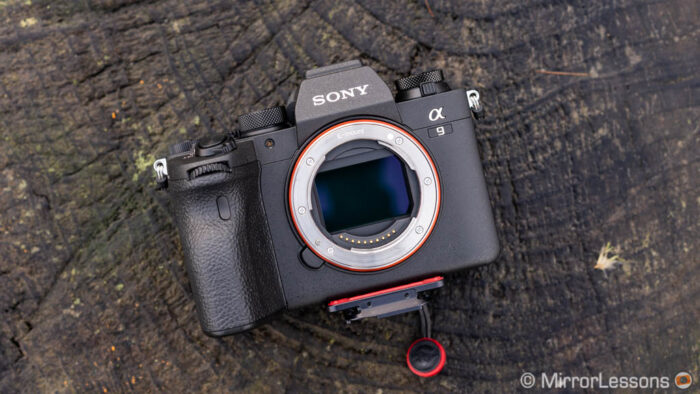
If it were just a question of sensor quality or AF performance, then there would be no better choice than one of these three Sony cameras. On the outside, they look identical. On the inside they are each very different and have something unique to offer when it comes to wildlife photography.
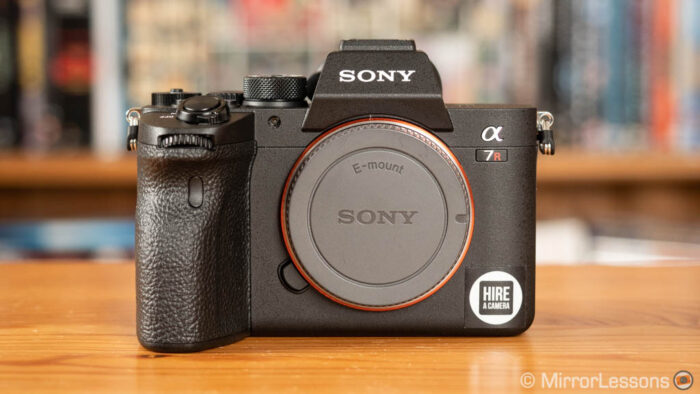
The A9 II has 24MP and the best autofocus system of any mirrorless camera I’ve tested to date, with a keeper rate of 96%/99%. Its phase detection system with 693 points and real time tracking has made the leap forward we were waiting for. And while it doesn’t work with birds yet, Eye AF for Animals can be useful for many other subjects.
The A7R IV has 60MP, the first full frame sensor to feature such a high resolution, which gives you an advantage when you need to crop in post, or use the APS-C mode that delivers 25MP. The AF is not in the same class as the A9 series, but it features all the latest software tweaks including real time tracking and Eye AF for Animals.
Thanks to its complex stacked sensor that includes an integral memory, the A9 II can process a huge amount of data simultaneously, bringing the electronic shutter performance to a whole new level.
The super fast sensor readout allows you to shoot up to 20fps with AF/AE tracking without any relevant distortion (rolling shutter effect). More importantly, it can do so while maintaining a live view feed in the EVF or LCD screen (no blackouts) thanks to the electronic shutter.
In simpler terms, when you start to follow the bird and capture a series of images, the live view in your EVF is maintained without any lag, interruption or delay whatsoever. In fact, in a moment of distraction, you might mistakenly start to record images without realising it. This is why Sony gives you the option to activate a fake shutter sound and a blinking marker on the screen to notify you that the camera is taking pictures.
To fully understand the advantage and experience the potential of this technology, you really need to try it for yourself with a fast moving subject. Birds in flight are ideal for this and tracking them while shooting has never been easier.
The A7R IV doesn’t have the same sensor technology, but you get a respectable 10fps at full resolution. Live view is deactivated and you see the images that are being recorded on the SD card instead. If you want live view (with blackouts), you need to select 8fps.
The A9 II has better buffer capabilities not just because of the faster processing speed but also the lower resolution, which translates into a smaller file size in comparison to the A7R IV 60MP file.
The best of both worlds: Sony A1
Then we have the A1, which is the latest release. Unfortunately I haven’t had the chance to test it yet. On paper, it takes the best of the other two models and combines them into one package. You get high resolution (50MP), a stacked Exmor RS sensor which means the same blackout-free shooting as the A9 II, a faster burst up to 30fps and the most advanced Sony autofocus to date, which includes Eye Animal AF for birds! I can’t wait to test this one!
Find our more about the camera in our A1 vs A9 II article.
Speaking of the sensors, it’s worth highlighting that they give you excellent results when it comes to dynamic range and high ISO. The A7R IV has an advantage in terms of DR whereas the A9 shows less noise at high sensitivities, but it’s safe to say they are two of the best sensors on the market. As for the A1, the first reports suggest that its 50MP chip is class-leading.
There is 5-axis stabilisation which also works with OSS lenses (3 axes on the sensor + OSS). The performance is good but mostly thanks to the optical stabilisation of the lenses, and either way it is not comparable to the likes of Olympus, Canon or Panasonic.
The design of the cameras has improved over the previous models. They have a dual SD card slot, a precise AF joystick, weather sealing and a deep level of customisation. The grip is more comfortable, the buttons are thicker and feel more precise, especially when wearing gloves.
That said, I found the Sony design to be the least comfortable when compared to Olympus Canon or even Nikon. The grip in particular is a bit small and you need to squeeze your fingers more than with other products (that of course also depends on how big your hands are, others might be fine with it). Optional landscape or vertical grips can help.
The A1 has a state of the art EVF with 9.44M dots, 240Hz of refresh rate and a magnification of 0.9x . The A9 II has 3.68M whereas the A7R IV has 5.76M. They share the same magnification of 0.78x and 120fps refresh rate.
The battery is larger and improves the lifespan significantly, putting it closer to DSLR territory despite the huge processing power employed by the cameras. An optional battery grip is available for all three.
Concerning video, the A9 II lacks the Picture Profiles (including S-Log and HLG), so its use is more limited despite the excellent 4K quality. The A7R IV has the picture profiles and gives you the best performance in Super35 mode (APS-C), although the footage is more than decent in full frame mode. The A1 stands out again thanks to its 8K capabilities, 4K up to 120fps and all the latest settings and colour profiles seen on the video-oriented A7S III.
The A1 is the most expensive camera on this list, followed by the A9 II and with the A7R IV not too far behind. The cost increases considerably if you want the best telephoto lenses available. If you’re happy with a slower zoom however, the price is more competitive.
Speaking of lenses, the Sony E-mount system has grown considerably over the past few years, and now third party brands are also starting to release telephoto lenses for A7/A9 models. Here are all the most interesting lenses to consider:
| Lens | TC | Max. reach |
|---|---|---|
| Sony 600mm f4 GM OSS | 1.4x / 2.0x | 840mm / 1200mm |
| Sony 400mm f2.8 GM OSS | 1.4x / 2.0x | 560mm / 800mm |
| Sony 200-600mm f5-6.3 G OSS | 1.4x / 2.0x | 840mm / 1200mm |
| Tamron 150-500mm f5-6.7 Di III VC VXD | No | 500mm |
| Sony 100-400mm f/4.5-5.6 GM OSS | 1.4x / 2.0x | 560mm / 800mm |
| Sony 70-200mm f/2.8 GM OSS | 1.4x / 2.0x | 280mm / 400mm |
| Sony 70-300mm f/4.5-5.6 G OSS | No | 300mm |
| Sigma 100-400mm f5-6.3 DG DN OS | No | 400mm |
The 200-600mm f5.6-6.3 is one of the most interesting choices on the list: it is not too expensive, the optical quality is really good and I was very pleased with it when I tested it on the A9 II and A7R IV. I’ve used the 100-400mm G Master on numerous occasions and the quality is stellar, but it is more expensive and you’ll feel the need for a teleconverter, which increases the budget.
Because these models have an advanced phase detection system, you can consider using DSLR lenses (Canon EF especially) via compatible adapters like the Sigma MC-11. The AF performance remains good but is not on the same level as native lenses. The fastest continuous shooting speed drops on the A9 II and A1. Still, it means the entire Canon, Sigma, Tamron and Sony A-mount catalogue is at your disposal.
Why the Sony A1, A9 II or A7R IV can be an interesting choice for wildlife and bird photography:
- the A9 II has the best autofocus of any mirrorless camera
- the A7R IV has the highest sensor resolution of any mirrorless camera
- the A9 II blackout-free live view system surpasses the performance of an optical viewfinder, and works up to 20fps
- Advanced tracking and Eye AF for animals
- great level of customisation
- great battery life
- weather sealing, dual SD card slot
- selection of lenses is improving
- the A1 has all of the above in one package, plus 8K video and Animal Eye AF for birds
To consider:
- very expensive if you want the best telephoto lenses (especially with the A1)
- not my favourite camera design when it comes to comfort and grip
- good image stabilisation but inferior to most of the competitors on the list
- for video, you want the A7R IV or the A1 which has more settings like HLG and S-Log
Are there more affordable cameras to start with?
- Yes! The original A9 can be found for less and has the same AF system as the mark II model
- the A7 III has a better AF score than the A7R IV, one of the very best 24MP sensors on the market and a competitive price
- the A7R III also has an attractive price now with its excellent 42MP sensor, and the AF is not too far from the A7R IV keeper rate
A bit of math:
| Dream kit | A1 600mm f4 | $19500 £18500 €21300 |
| More affordable dream kit | A9 II 600mm f4 | $17500 £16700 €19000 |
| 1 lens kit | A7R IV 200-600mm f5.6-6.3 | $5500 £5200 €5540 |
| Beginner kit | A7 III Tamron 150-500mm | $3400 |
Note: prices as of April 2021. Add $550 / £480 / €590 or $550 / £500 / €590 for the Sony teleconverters.
Reminder: the links below are affiliate links. If you decided to buy something after clicking the link, we will receive a small commission.
Check price of the Sony A9 II on
Amazon | B&H Photo | eBay
Check price of the Sony A7R IV on
Amazon | Amazon UK | B&H Photo | eBay
Check price of the Sony A9 on
Amazon | Amazon UK | B&H Photo | eBay
Check the price of the Sony A7R III on
Amazon | Amazon UK | B&H Photo | eBay
Check price of the Sony A7 III on
Amazon | Amazon UK | B&H Photo | eBay
Second-hand Sony cameras on
MPB US | MPB UK
Best Mirrorless for Wildlife Photography: Fujifilm X-T3 and X-T4
X-mount system – 26MP APS-C sensor – 30fps with C-AF
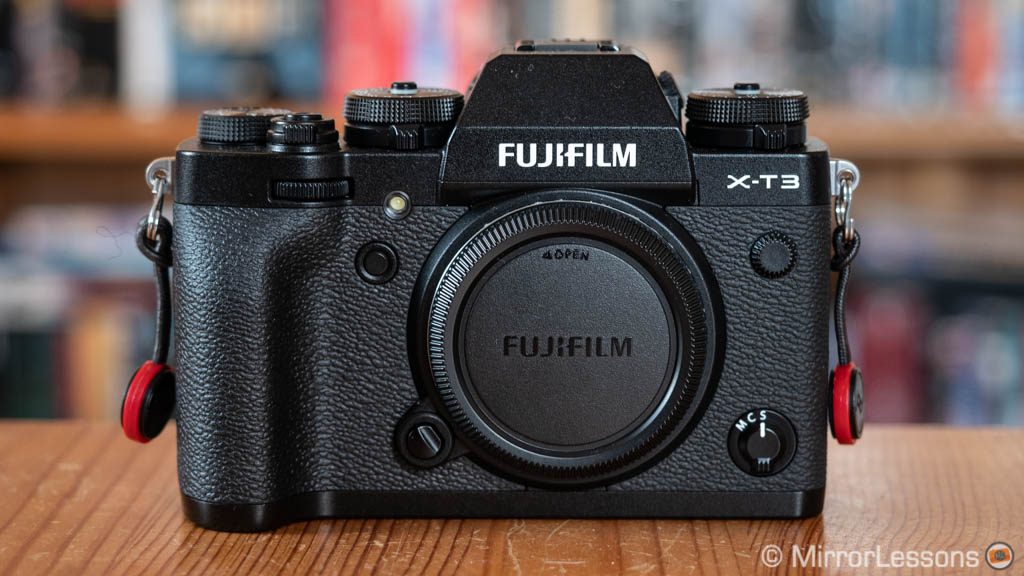
The X-T3 inaugurated the fourth generation of X-series cameras, and the X-T4 came less than two years later with extra improvements, which were then given to the X-T3 via firmware update (most of them at least). So it is safe to say that, as far as wildlife photography goes, these two cameras are the same.
They have an advanced autofocus system with 117 points (425 available in certain modes). More important, the phase detection points cover the entire width of the sensor rather than just the central portion (in comparison to older Fuji models). This means that when following a difficult subject that temporarily moves to the left or right side of the frame, there is a higher chance the camera will be able to continue tracking effectively.
Focus acquisition and the cameras’ ability to lock onto difficult subjects has improved. They react more quickly and accurately when birds unexpectedly veer towards to you. The AF-C Custom Settings allow you to fine-tune the performance. The acquisition speed in S-AF with either a single area or Zone Area is really good.
For moving subjects, you have to make sure to select the right settings or the performance can be less than ideal. It is best to avoid the Wide/Tracking mode, especially with fast and unpredictable subjects. But even with the right settings, the performance is good (79% / 94%) but not at the same level of Sony or Canon. And I got that result with the XF200mm f2, which is a large and expensive lens to use on the small X-T series. Also, it is worth noting that the software improvements brought by the X-T4 first, and the X-T3 firmware later, haven’t made a substantial leap forward in comparison to when the X-T3 first came out.
Where the two cameras excel is in terms of their continuous shooting speeds. Select the electronic shutter, and you can reach speeds of 20fps and 30fps. At 30fps there is a catch: the sensor is cropped by 1.25x (16MP file) but in my tests, I found this mode to give the best keeper rate with fast subjects such as birds. There is also a mode called Pre-Shoot, which like Capture Pro on the E-M1 II, allows you to save pictures before fully pressing the shutter release button.
If you prefer, of course, you can shoot at 20fps with the full width of the sensor, and even better, all these speeds are available with live view and no blackouts, just like the Sony A9. It makes following a fast and unpredictable bird much easier than with the mechanical shutter which only shows the last image taken instead (when the H mode is selected). I haven’t noticed any relevant distortion when photographing birds with the electronic shutter, so I would say rolling shutter is quite contained.
If you prefer to stick with the mechanical shutter, the X-T4 is faster with 14fps, whereas the X-T3 tops out at 11fps.
The 26.1MP BSI X-Trans IV sensor doesn’t provide a substantial increase in image quality over the previous generation (X-H1, X-T2), but it remains excellent nonetheless with good dynamic range and high ISO performance. The 4K video quality on the other hand is a big step forward and includes 4K video recording up to 60fps in 10-bit, as well as a maximum of 120fps in 1080p.
The design is more compact than the other cameras mentioned here, especially concerning the front grip. With a large telephoto lens, you’ll feel the need to add a grip extender, the optional battery pack or at the very least, a thumb rest.
The cameras themselves are very comfortable to use thanks to the many dials, AF joystick, touch screen and the possibility to customise them to your liking. The viewfinder has 3.68M dots of resolution and comes with a maximum frame rate of 100fps in Boost mode.
One advantage of the X-T4 is the battery, which is larger and more capable than the one found on the X-T3. A battery grip is available for both.
Another advantage of the X-T4 over its predecessor is in-body image stabilisation, but in this specific case I wouldn’t consider it a deal breaker over using optical stabilisation alone.
Then we have another important aspect which is the lens selection:
| Lens | TC | Max. reach | Equivalence |
|---|---|---|---|
| Fujinon 100-400mm f/4.5-5.6 | 1.4x / 2.0x | 560mm / 800mm | 840mm / 1200mm |
| Fujinon XF 70-300mm f/4.5-5.6 | 1.4x / 2.0x | 420mm / 600mm | 630mm / 900mm |
| Fujinon XF 200mm f/2 | 1.4x / 2.0x* | 280mm / 400mm | 420mm / 600mm |
| Fujinon XC 50-230mm f/4.5-6.7 II | n.c. | 230mm | 345mm |
| Fujinon XF 55-200mm f/3.5-4.8 | n.c. | 200mm | 300mm |
| Fujinon XF 50-140mm f/2.8 | 1.4x / 2.0x | 196mm / 280mm | 294mm / 420mm |
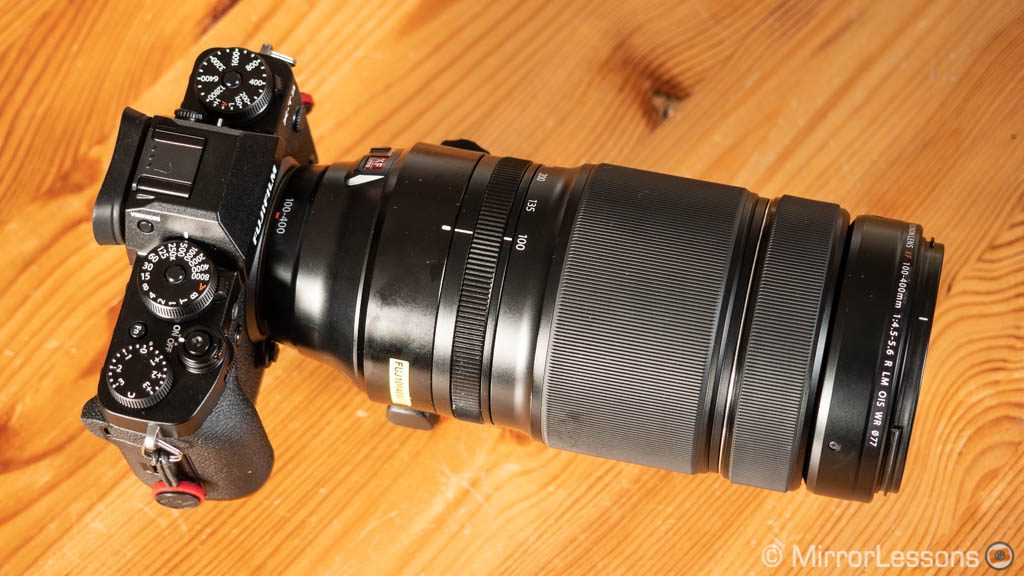
The most popular lens designed for wildlife is the XF 100-400mm f/4.5-5.6. It provides excellent sharpness, autofocus speed and optical stabilisation. There are two teleconverters that also work with the XF 50-140mm f/2.8 but to get the most reach, you need to use the TC 2.0x which decreases the fastest aperture to f/5.6. At that point, the 100-400mm becomes the better solution. The 55-200mm f3.5-4.8 is a decent lens but can feel a little short. Plus it lacks weather-sealing. There is the new 70-300mm that is weather sealed and compatible with teleconverters. I’ll test is as soon as possible.
If you want a faster option, there is the XF 200mm f/2 but it costs much more. It comes with a newly designed 1.4x f2 teleconverter. But as of now, I’m not sure it is worth spending all that money unless the type of subject you photograph don’t require more reach than 400mm (equivalent). That said, the quality of the lens is superb to say the least!
Why the Fujifilm X-T3 and X-T4 can be an interesting choice for wildlife and bird photography:
- excellent image quality and high ISO performance
- up to 20fps, or 30fps in crop mode, with live view and no blackouts
- easy to use thanks to the various buttons and dials
- robust build quality, full weather-sealing and dual SD card slot
To consider:
- not the best ergonomics with large lenses
- the AF is good but hasn’t really made huge leap forward in comparison to some of the competition
- the X-T3 can be much cheaper than the X-T4 with the right offer
The Math:
| Dream kit | X-T4 XF 200mm F2 with TC 1.4x | $7700 £6850 €7700 |
| Best kit | X-T4 XF 100-400mm | $3600 £3050 €3400 |
| Affordable kit | X-T3 XF 70-300mm | $2300 £1730 €1850 |
Reminder: the links below are affiliate links. If you decided to buy something after clicking the link, we will receive a small commission.
Check the price of the Fujifilm X-T3 on
Amazon | Amazon UK | B&H Photo | eBay
Check price of the Fujifilm X-T4 on
Amazon | Amazon UK | B&H Photo | eBay
Second-hand Fujifilm cameras on
MPB US | MPB UK
Best Mirrorless for Wildlife Photography: Sony A6400 and A6600
E-mount system – 24MP APS-C sensor – 11fps (C-AF)
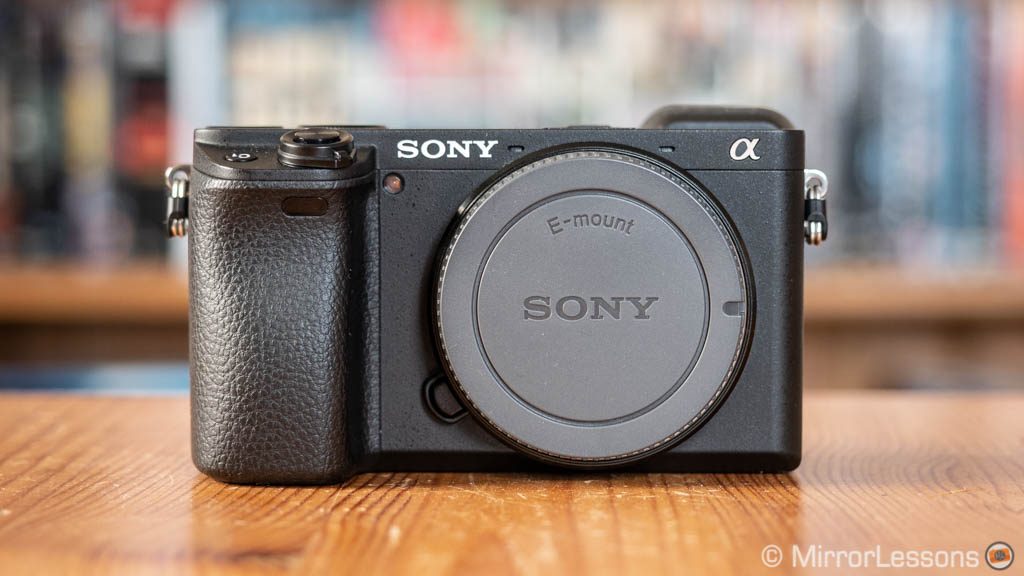
The Sony a6000 series isn’t my favourite as far as ergonomics and ease of use are concerned. Certainly the small size of the body can be an advantage for other genres but when using larger lenses, you inevitably feel a lack of balance and find yourself wishing for a larger grip. It would also be nice to have more buttons and dials to control the most important settings.
That said, there are advantages worth considering. First is the price: the a6400 can be found for around $900 which is the cheapest option available on this list. The A6600 is $500 more expensive however but has extra things like 5-axis stabilisation (which won’t make a real difference for wildlife), a slightly larger grip and a larger battery which is the same found on the A7 III and A9 series.
The autofocus system is the same, with 425 phase detection points and an advanced algorithm. My average keeper rate for BIF is around 80%-93%. The cameras offers useful settings for the AF areas, as well as one of the best tracking modes I’ve seen (only beaten by the A9 series). There is also EyeAF for animals, although it is the version that doesn’t work for birds.
The continuous shooting speeds go up to 11fps or 8fps if you want live view (with blackouts). Though the viewfinder is smaller than those of the other cameras listed here, it compensates for this with good clarity and a fast refresh rate (120fps).
The 24MP APS-C sensor is very good concerning dynamic range and high ISO. The 4K video quality is excellent and there are lots of useful settings for advanced video makers but rolling shutter can be severe when panning quickly.
Amongst the negative things to point out, there is the short battery life and the lack of an official battery grip, The camera offers resistance against dust and moisture but isn’t freeze proof. There is no official battery grip, so you’ll have to look into third-party alternatives which come with limitations (check our accessory list to find out more).
Then we have the lenses. One of the most interesting options among the APS-C lenses is the 70-350mm. The selection increases with the lenses designed for the Sony full-frame mirrorless system where you can benefit from the 1.5x crop factor. Here is the selection thus far:
| Lens | TC | Max. reach | Equivalence |
|---|---|---|---|
| Sony FE 100-400mm f/4.5-5.6 GM | 1.4x / 2.0x | 560mm / 800mm | 840mm / 1200mm |
| Sony FE 70-200mm f/2.8 GM | 1.4x / 2.0x | 280mm / 400mm | 420mm / 600mm |
| Sony FE 200-600mm f/5.6-6.3 G | 1.4x / 2.0x | 840mm / 1200mm | 1260mm / 1800mm |
| Sony FE 70-300mm f/4.5-5.6 | n.c. | 300mm | 450mm |
| Sony E 70-350mm f/4-6.3 G | n.c. | 350mm | 525mm |
| Sony E 55-210mm F4.5-6.3 | n.c. | 210mm | 315mm |
| Sigma 100-400mm f5-6.3 | n.c. | 400mm | 600mm |
| Tamron 70-300mm F/4.5-6.3 | n.c. | 300mm | 450mm |
| Tamron 100-500mm F/5-6.7 | n.c. | 500mm | 750mm |
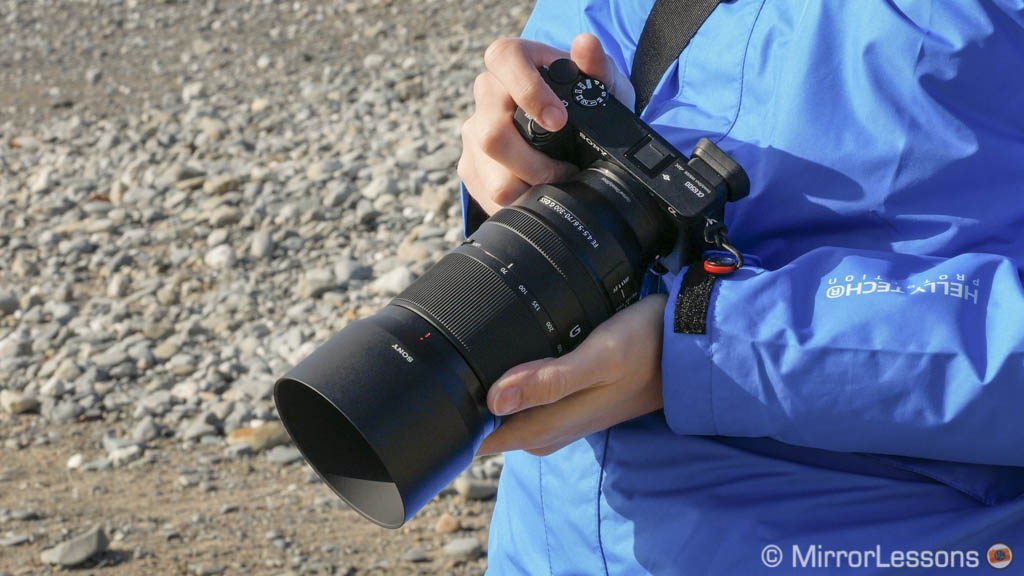
One of the best choices if you have the budget is the 100-400mm G Master which has excellent optical quality, but keep in mind it is a heavy lens for these small APS-C cameras. A cheaper and more lightweight option is the Sigma 100-400mm f5-6.3 DG DN OS, and possibly the soon to be announced Tamron 100-500mm.
I used the FE 70-300mm with good results but it can feel too short in some situations. The new 70-350mm offers a bit more reach and is less expensive. The 200-600mm has the most versatile range but you have to consider its size and weight when mounted on a compact body like the A6400 or A6600.
Why the Sony a6400 or A6600 can be an interesting choice for wildlife and bird photography:
- excellent autofocus performance and tracking, Eye AF for animals (except birds)
- excellent image quality
- burst speeds up to 11fps
- the A6400 is the cheapest option on the list
- very good selection of lenses if we include the full frame options
To consider:
- ergonomics and ease of use are not their strongest point
- the A6600 is more expensive but has a larger grip, better battery life and 5-axis stabilisation
The Math:
| Best kit | A6600 100-400mm GM | $3900 £3400 €4000 |
| Affordable kit | A6400 Sigma 100-400mm | $1850 £1800 €1900 |
Reminder: the links below are affiliate links. If you decided to buy something after clicking the link, we will receive a small commission.
Check price of the Sony a6400 on
Amazon | Amazon UK | B&H Photo | eBay
Check price of the Sony A6600 on
Amazon | Amazon UK | B&H Photo | eBay
Second-hand Sony cameras on
MPB US | MPB UK
Best Mirrorless for Wildlife: Panasonic G9
Micro four thirds system – 20MP sensor – 60fps (S-AF), 20fps (C-AF)
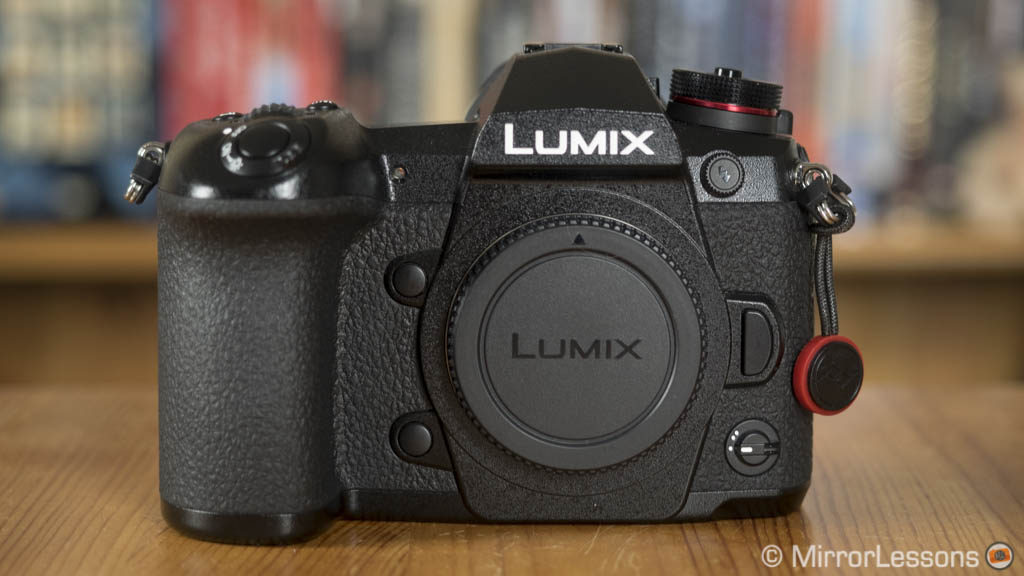
The Lumix G9 is a surprisingly large camera for a micro four thirds model, but it comes with a robust grip that feels like the natural extension of your hand. The body is very well-built and is completely weather-sealed. The shutter release button is a little too sensitive for my taste but others may prefer it that way.
There is a rich range of physical controls including 19 function buttons and an AF Joystick on the rear (although I wish the latter weren’t so close to the EVF). The top LCD screen is very handy as a way of checking settings on the fly and the electronic viewfinder is excellent thanks to the high resolution of 3.68M dots, 120fps refresh rate and variable magnification (the highest being 0.83x). There are also dual SD card slots with UHS-II compatibility, and the battery life is very good.
The continuous shooting speeds go up to 12fps or 9fps with continuous AF when using the mechanical shutter. Switch to the electronic version and you can increase these speeds to 20fps (with AF/AE Tracking) or 60fps just like the E-M1 III and E-M1X. And just like the Olympus, you can use a mode similar to Pro Capture (called Pre-Burst) to save up to 15 images before fully depressing the shutter button. Bear in mind though that there is still some distortion due to rolling shutter. It is less noticeable for birds in flight but slightly worse than the sensor readout of the E-M1 III and E-M1X.
Up to 9fps, the G9 shows you a live view with blackouts. At higher speeds, it’s the last image taken that is shown instead. Although this results in a delay between what you see and what is actually happening, shooting at 20fps does help you to track fast moving subject more effectively because the frame rate is really smooth.
Also, keep in mind that if you want C-AF with full focus priority, you need to choose the Medium burst mode (7fps).
The buffer capabilities are not particularly good when shooting at these high bursts, but one alternative is to take advantage of the 6K/4K Photo mode, with which you can record 6K/4K videos at 30fps and save any frame you want as an 18MP or 8MP JPG. And since the camera is in fact recording a video, there aren’t any buffer limitations besides the usual 30 minute allowance per clip.
The G9 features in-body stabilisation with 5 axes on the sensor and Dual IS (sensor + optical stabilisation). It’s the best Panasonic has ever designed in the Lumix range and comes close to the performance of an E-M1 II for both stills and video. The image quality is good and comes with an excellent JPG engine (good noise reduction and sharpness, warm colours) if you like straight out-of-camera results.
Despite not being as advanced as the GH5 for video, the G9 still has some nice features on offer if you are interested in this genre for wildlife. It can record 4K up to 50/60p and offers slow motion capabilities up to 180fps in 1080p. The quality is excellent thanks to the many colour profile improvements, and a firmware update also added 10-bit internal recording (up to 30p).
Below you can see a video taken on a recent trip to Scotland, all filmed hand-held with the Leica DG 200mm f2.8 lens and TC 1.4x.
In many ways, I would have loved to see this camera at the top of the list. It ticks all the boxes but does have one limitation that can’t be overlooked: the autofocus.
The AF of the G9 excels in almost every way except for birds in flight, or more precisely, birds flying against a busy background. In this particular situation, the DfD contrast detection technology struggles in comparison to phase detection. Panasonic has made some improvements via firmware (version 2.0 and 2.4), but the performance remains behind its competitors. The performance decreases even more if you shoot at 20fps with the electronic shutter (unlike the other brands).
The lens list is the same as that of the E-M1X and E-M1 III, except for the Dual IS column.
| Lens | TC | Equivalence | Dual IS |
|---|---|---|---|
| Olympus 150-400mm f/4.5 Pro TC 1.25x IS | MC-14 / MC-20 | 300-800mm to 750-2000mm | No |
| Olympus 300mm f/4 Pro IS | MC-14 / MC-20 | 600mm to 1200mm | No |
| Panasonic Leica 200mm f/2.8 O.I.S. | DMW-TC14 / DMW-TC20 | 400mm to 800mm | Yes |
| Olympus 40-150mm f/2.8 Pro | MC-14 / MC-20 | 80-300mm to 160-600mm | No |
| Panasonic Leica 100-400mm f/4-6.3 O.I.S. | No | 200-800mm | Yes |
| Olympus 100-400mm f/5-6.3 IS | MC-14 / MC-20 | 200-800mm to 400-1600mm | No |
| Panasonic Leica 50-200mm f/2.8-4 O.I.S. | DMW-TC14 / DMW-TC20 | 100-400mm to 200-800mm | Yes |
| Panasonic G 100-300mm f/4.5-5.6 II O.I.S. | No | 200-600mm | Yes |
| Olympus 75-300mm f/4.8-6.7 II | No | 150-600mm | No |
| Olympus 12-200mm f3.5-6.3 | No | 24-400mm | No |
| Panasonic G 45-200mm f4-5.6 II O.I.S. | No | 90-400mm | Yes |
Please note that the performance may not be as good with Olympus lenses because the DfD system is officially only compatible with Lumix/Leica lenses. In my personal experience with the G9, I found that the performance mainly decreased for birds in flight, whereas in many other situations, it performed much better. Another thing to keep in mind is that Dual IS is not compatible with Olympus lenses so you’ll have to choose between sensor or optical stabilisation.
Why the Panasonic G9 can be an interesting choice for wildlife and bird photography:
- up to 60fps or 20fps with continuous AF
- 6K/4K Photo gives you 30fps/60fps without any buffer limitation
- very good image stabilisation
- complete weather-sealing, excellent build, good battery life, dual SD card slot and optional battery grip
- Micro Four Thirds gives you a great selection of lenses
- excellent video quality
To consider:
- the autofocus struggles more for birds in flight or when shooting at 20fps with the electronic shutter
- 6K/4K Photo only gives you a JPG file
The math:
| Best kit | G9 DG 200mm F2.8 and TC 1.4x | $4000 £2900 €3450 |
| Versatile kit | G9 DG 100-400mm | $2600 £2100 €2600 |
| Affordable kit | G9 Lumix 100-300mm II | $1550 £1400 €1700 |
Reminder: the links below are affiliate links. If you decided to buy something after clicking the link, we will receive a small commission.
Check price of the Panasonic Lumix G9 on
Amazon | Amazon UK | eBay | B&H Photo
Second-hand Panasonic cameras on
MPB US | MPB UK
Best Mirrorless Camera for Wildlife: Canon EOS R5 and R6
RF-mount system – 45MP or 20MP full frame sensor – 20fps in C-AF
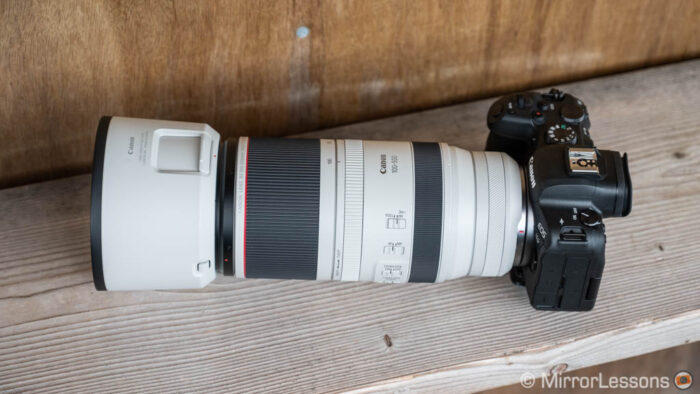
Canon has stepped up its game with the introduction of the R5 and R6, and the performance is similar in some respects to the Sony models listed in the previous chapter. Soon, they will be joined by the flagship R3, which will feature an updated AF system and speeds up to 30fps.
The EOS R5 has 45MP whereas the R6 has 20MP. The latter may sound a little bit low for wildlife but you can still do a lot with it. They deliver good performance concerning dynamic range and high ISO, and the R6 for example shows in our comparison test that it is every bit as good as cameras like the A7 III.
The R5 and R6 share the same autofocus system, the latest Dual Pixel CMOS AF II with coverage across the entire sensor surface and more than 1,000 points used in tracking mode. Furthermore, they include the most advanced and reliable Animal Subject tracking mode I’ve tested so far and it works with birds too by detecting the body, head or eye depending on the distance and position. It’s really impressive to see it in operation and it is among the settings that gave me the best score for birds in flight (93% / 97%).
Although they lack the blackout-free continuous shooting experience the A1 or A9 can provide, the two Canon models can shoot up to 20fps with the electronic shutter (or 12fps with the mechanical shutter). The buffer is excellent and the 20fps view in the EVF does help when tracking the subject, although you have to keep in mind you’re seeing what has just happened milliseconds ago rather than what is happening. Because of the higher resolution, the buffer is a bit smaller on the R5 understandably.
Canon claims a record 8 stops of compensation with the in-body stabilisation. My own tests didn’t allow me to go that far (at least with the R6) but it is certainly among the best IBIS systems you can find on a full frame camera. For wildlife, the stabilisation on the lens will often play a more important role, but the camera will also combine three axes from the sensor to further improve the result.
One thing I really like about the EOS R series is the ergonomics. The camera is comfortable to hold, has all the controls in the right place, and the menu is very easy to navigate thanks to the touch screen, although some areas like the advanced autofocus settings can be overwhelming at first. The R5 has a stronger build quality (though both are weather-sealed) and a few extra things like the top LCD screen.
The R5 has more resolution with the EVF (5.76M vs 3.69M dots) but the other characteristics are the same including 0.76x magnification, 120Hz refresh rate and a 23mm eyepoint.
The R6 uses two UHS-II cards, whereas the R6 has one SD and one CFexpress card. The latter offers faster writing and reading speeds, but is more expensive. They don’t have the best battery life on the market, but I found it much better than what the official specifications suggest.
Videos specifications are very good, with the R5 capable of recording 8K video (including in 12-bit RAW format) and 4K up to 120fps. The R6 does 4K up to 50 or 60p. While the quality is very good, both cameras can suffer from overheating, a problem that has been widely reported since their release. Firmware updates have improved the performance but not eliminated it completely.
Then we have the lenses. If we only take into account the native RF mount, the choice is a bit limited as of now. On top we find the RF 400mm F2.8 and 600mm F4, which are similar to the EF versions but with improved autofocus. As you can imagine, they are very expensive.
There is the RF 100-500mm which left me with a very positive impression: it is really sharp and compact, so a joy to use with the R5 or R6. However its slow aperture at 500mm might discourage some of you (f7.1) and it is expensive. Fortunately, it is compatible with the teleconverters.
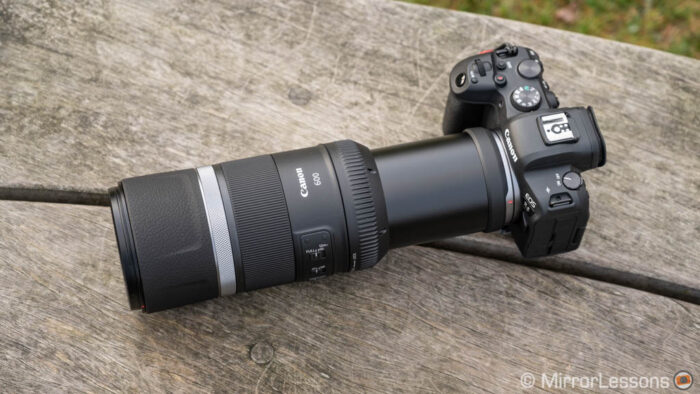
The other two lenses are quite different from what you’ll find elsewhere: two primes, a 600mm and 800mm, with a fixed aperture of f11, a compromise that allows these lenses to be small and affordable. I’ve only tried the 600mm so far: AF and sharpness are good, but I got the feeling that you’ll soon want something of a higher standard or with a faster aperture. But it’s not a bad lens to start with and the two are also compatible with the teleconverters (keep in mind that it becomes f22 with the TC 2.0x).
| Lens | TC | Max. reach |
|---|---|---|
| Canon RF 600mm F4 L IS USM | 1.4x / 2.0x | 840mm / 1200mm |
| Canon RF 400mm F2.8 L IS USM | 1.4x / 2.0x | 560mm / 800mm |
| Canon RF 100-500mm F4.5-7.1 L IS USM | 1.4x / 2.0x | 700mm / 1000mm |
| Canon RF 600mm F11 IS STM | 1.4x / 2.0x | 840mm / 1200mm |
| Canon RF 800mm F11 IS STM | 1.4x / 2.0x | 1120mm / 1600mm |
Canon is committed to producing more RF lenses and we should see more telephotos as well. In the meantime, there is also the option of EF lenses and the EF to EOS R adapter, which widens the selection considerably between Canon products and options from Sigma and Tamron. The adapter works very well and I found focus to be as accurate as with the native lenses. The R6 gave me the same score for birds in flight when paired with the 13 year old 800mm f/5.6.
Why the Canon R5 or R6 can be an interesting choice for wildlife and bird photography:
- excellent ergonomics
- one of the best autofocus systems on the market (Animal AF works well too)
- fast continuous shooting speed of 20fps
- very good image quality
- seamless compatibility with EF lenses
To consider:
- the 45MP sensor of the R5 gives more room for cropping
- more limited choice of native RF lenses for now
- CFexpress cards for the R5 are more expensive
- be aware of overheating if you’re considering them for video work
- the flagship R3 is in the works
A bit of math:
The R5 is more expensive than the R6 so that is something to keep in mind.
| Dream kit | R5 RF 600mm F4 | $16900 |
| Best kit | R5 RF 100-500mm | $6600 £7200 €7650 |
| Affordable kit | R6 600mm f11 | $3200 £3250 €3420 |
Reminder: the links below are affiliate links. If you decided to buy something after clicking the link, we will receive a small commission.
Check price of the Canon EOS R5 on
Amazon | Amazon UK | B&H Photo | eBay
Check price of the Canon EOS R6 on:
Amazon | Amazon UK | B&H Photo | eBay
Second-hand Canon gear on:
MPB US | MPB UK
Best Mirrorless for Wildlife: Nikon Z6 and Z7 series
Z-mount system – 24MP and 45MP full frame sensor – 14fps to 9fps with C-AF
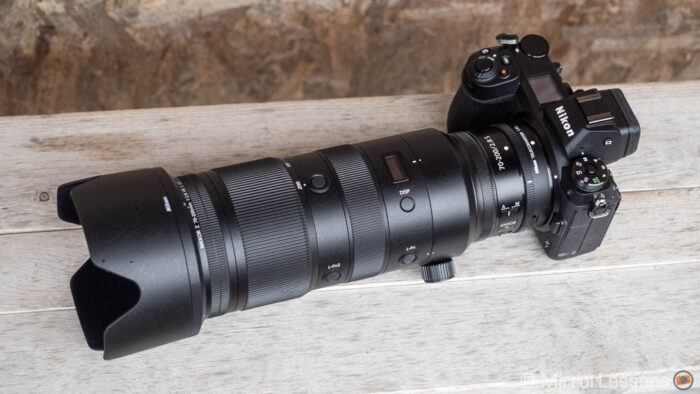
The Z6 and Z7 were met with mixed reviews when they came out concerning the autofocus performance. But thanks to firmware updates, they’ve improved and when I tested them for my usual birds in flight, they exceeded my expectations.
Let’s start by pointing two important things: I have not tested the Z6 II and Z7 II yet. They are very similar (including the sensor) and thanks to the dual image processor, they should have faster AF performance than the first generation. Considering that I find the mk1 version excellent and not far from Canon and Sony, I expect the mark II models to be even closer (I hope to test them soon).
The second important thing is that as of today, the choice of native lenses for wildlife photography is close to zero. So if you’re interested in either of these cameras, you need to wait for more selection or use Nikkor DSLR lenses (more on this below).
But what about the cameras? Well, the Z6 has a 24MP sensor with excellent dynamic range that matches the A7 III, and good high ISO performance. It can shoot up to 12fps, although it you want 14-bit RAW, it’s 9fps. The buffer isn’t great however. The Z6 II is a bit faster (14fps or 12fps) and uses the same sensor as the Z6. The buffer should be improved too.
The Z7 has a 45MP sensor with good dynamic range, although some banding can appear when trying to open the shadows by 3 stops or more. The Z7 II uses the same sensor, so I suspect it has the same problem (but I have not verified this yet). The burst speed is 9fps for the Z7 and 10fps for the Z7 II and the latter, along with the Z6 II, should have an improved buffer.
The autofocus works very well. Single AF is fast and continuous AF will surprise you as long as you use the right settings. I advise NOT to use the Tracking mode but instead to choose the Wide-area (L) setting when following a subject. Although the working AF area is smaller, it is much more reliable than Tracking. I know this can confuse Nikon DSLR users because the 3D Tracking mode of those cameras is one of the best settings to choose. But on the Z series, it is the opposite. This might change with the Z6 II and Z7 II since Nikon claims it has improved the AF, but I’ll wait to test that myself before saying any more.
The Z series design is one of my favourites. It’s small but very well balanced with a comfortable grip and a well thought out button layout.
Other points worth mentioning in a nutshell:
- they all have five axis stabilisation on the sensor and can work with the lens’ VR (although only three axes are used on the sensor)
- they feature the same EVF (3.69M dots, 0.8x of magnification, 60Hz refresh rate and a 21mm eyepoint)
- the battery life is average but far from the best performance offered by the Sony NP-FZ100
- the first generation Z6 and Z7 have one card slot only (CFexpress), the mark II versions have one SD and one CFexpress slot
- They can record 4K video, but you’ll need an external recorder for N-Log or Prores RAW
As mentioned further above, the choice of native lenses for wildlife is pretty limited. In fact, your only option for now is the superb 70-200mm 2.8 and the teleconverters, but this means that the maximum reach is 400mm. Two other lenses are in the pipeline so hopefully we’ll have more choice by the end of 2021.
| Lens | TC | Max. reach |
|---|---|---|
| Nikon Z 70-200mm F2.8 | 1.4x / 2.0x | 280mm / 400mm |
| Nikon Z 100-400mm* | – | – |
| Nikon Z 200-600mm* | – | – |
Of course if we look at the Nikkor F-mount selection and use the FTZ adapter, the lens choice issue is no more. I’ve tested the Z7 with the Sigma 150-600mm Contemporary, and more recently the Z6 with the 300mm f4 PF and the teleconverters. It was a surprisingly good and compact combination. I hope we’ll see a mirrorless version of this lens in the future.
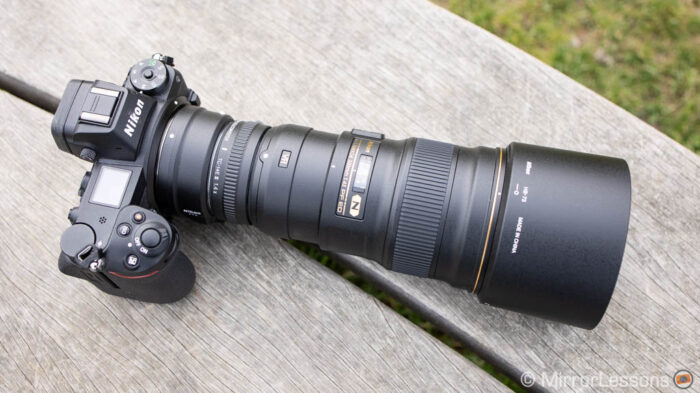
Why the Nikon Z6 or Z7 can be an interesting choice for wildlife and bird photography:
- balanced ergonomics
- solid autofocus performance (with the right settings)
- good continuous shooting speeds
- excellent image quality
To consider:
- the Z7 sensor can display banding when recovering shadows a lot (I have yet to confirm this with the Z7 II)
- very limited choice of native lenses for now
- only one card slot for the Z6 and Z7 mk1, and it’s the more expensive CFexpress type
A bit of math:
There is no point listing the best combination of camera and lenses since there is only one native lens that can fit the job (and not entirely). You can check the price of the individual items by following the links below. I’ll update this part once more lenses are on the market.
Reminder: the links below are affiliate links. If you decided to buy something after clicking the link, we will receive a small commission.
Check price of the Nikon Z6 on
Amazon | Amazon UK | B&H Photo | eBay
Check price of the Nikon Z6 II on
Amazon | Amazon UK | B&H Photo | eBay
Check price of the Nikon Z7 on
Amazon | Amazon UK | B&H Photo | eBay
Check price of the Nikon Z7 II on
Amazon | Amazon UK | B&H Photo | eBay
Second-hand Nikon equipment on
MPB US | MPB UK
Additional reads:
Conclusion
DSLRs still have their place in the world of wildlife photography, offering great autofocus performance, a robust design and a wide selection of camera bodies and lenses, for every need and budget. However mirrorless systems and the innovative technologies they incorporate are gradually closing the gap.
Olympus and Panasonic were the first to create an alternative to DSLRs with a complete system of bodies and lenses. While the performance is not the best when it comes to sensor quality or autofocus (by 2021 standards), it is the only system that can provide a true benefit to those seeking a lightweight and compact solution.
Sony has come a long way, today offering the best image quality, the best autofocus performance and the fastest speeds. The effort to produce lenses has payed off, and interest from third parties like Sigma and Tamron is making the system more and more complete.
Canon and Nikon, two brands that have dominated this genre with DSLRs, are catching up on the mirrorless front, and they will both release a flagship model this year that could close the gap with Sony when it comes to technology and performance.
Fujifilm is perhaps more of an outsider at this time, but the system now has the performance and also more of a lens selection. They also offer a good compromise between budget, quality, performance and portability.
Even more lenses and camera bodies are on their way, which may well make wildlife one of the most competitive genres in the years to come.
